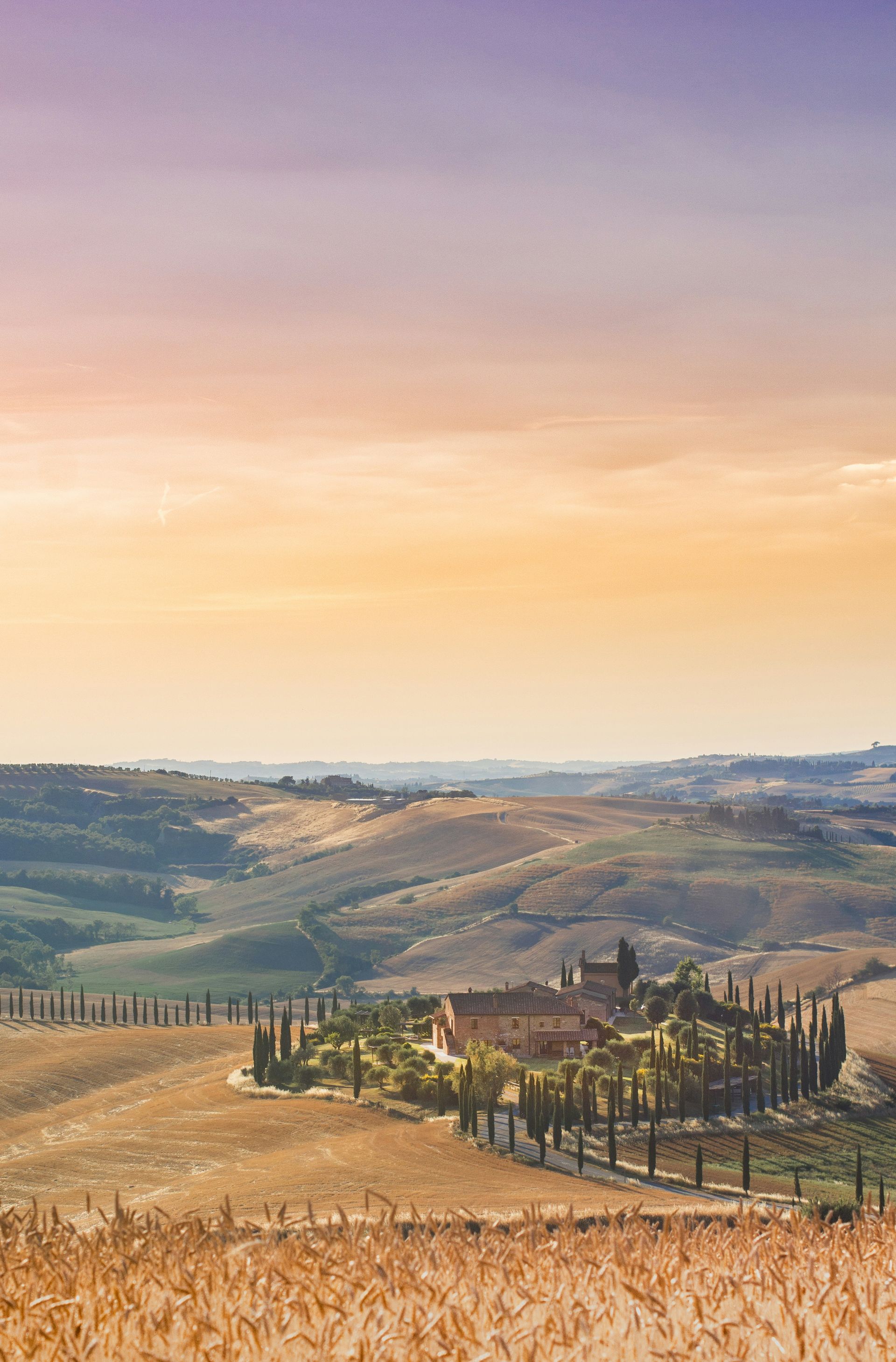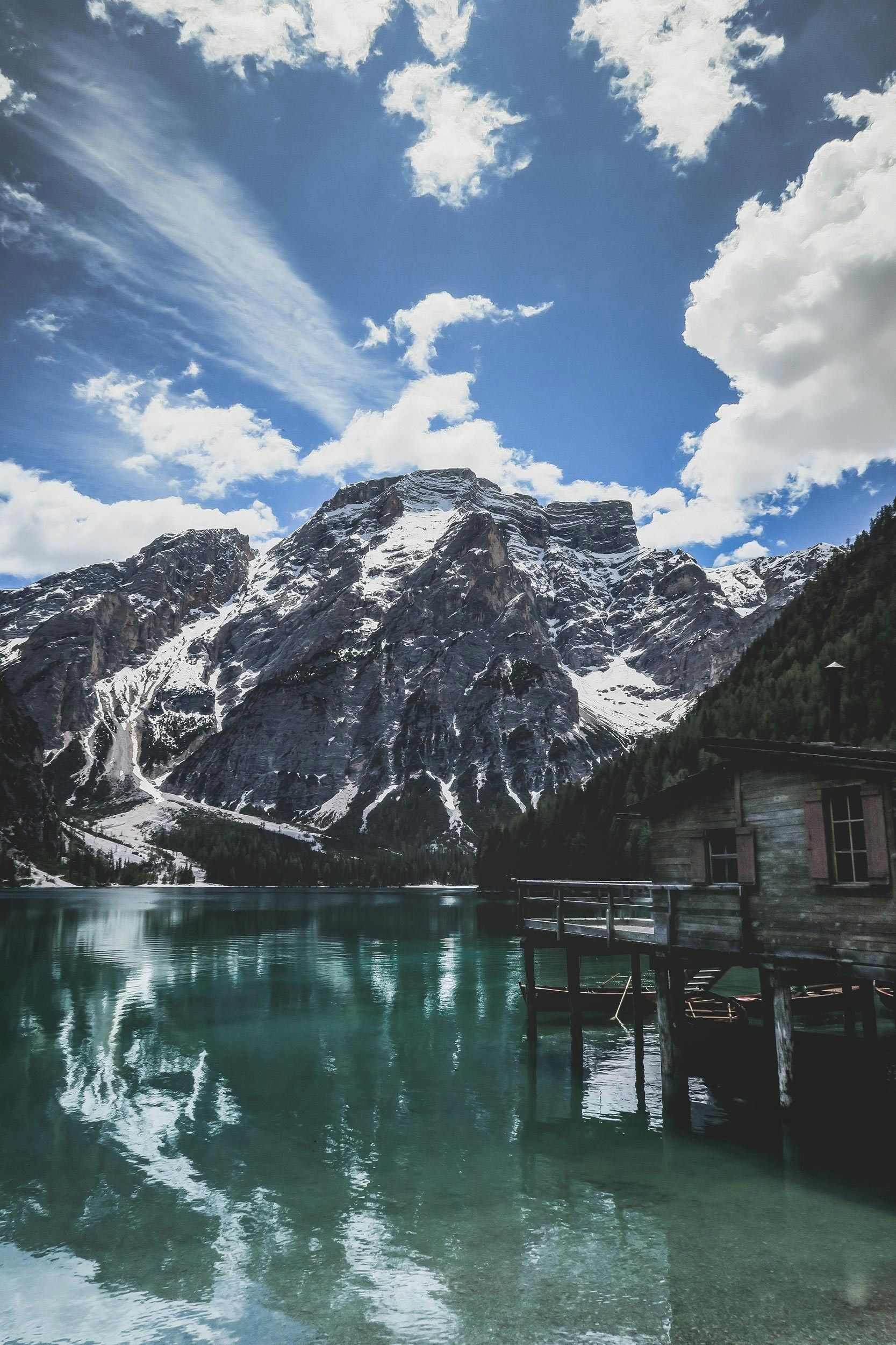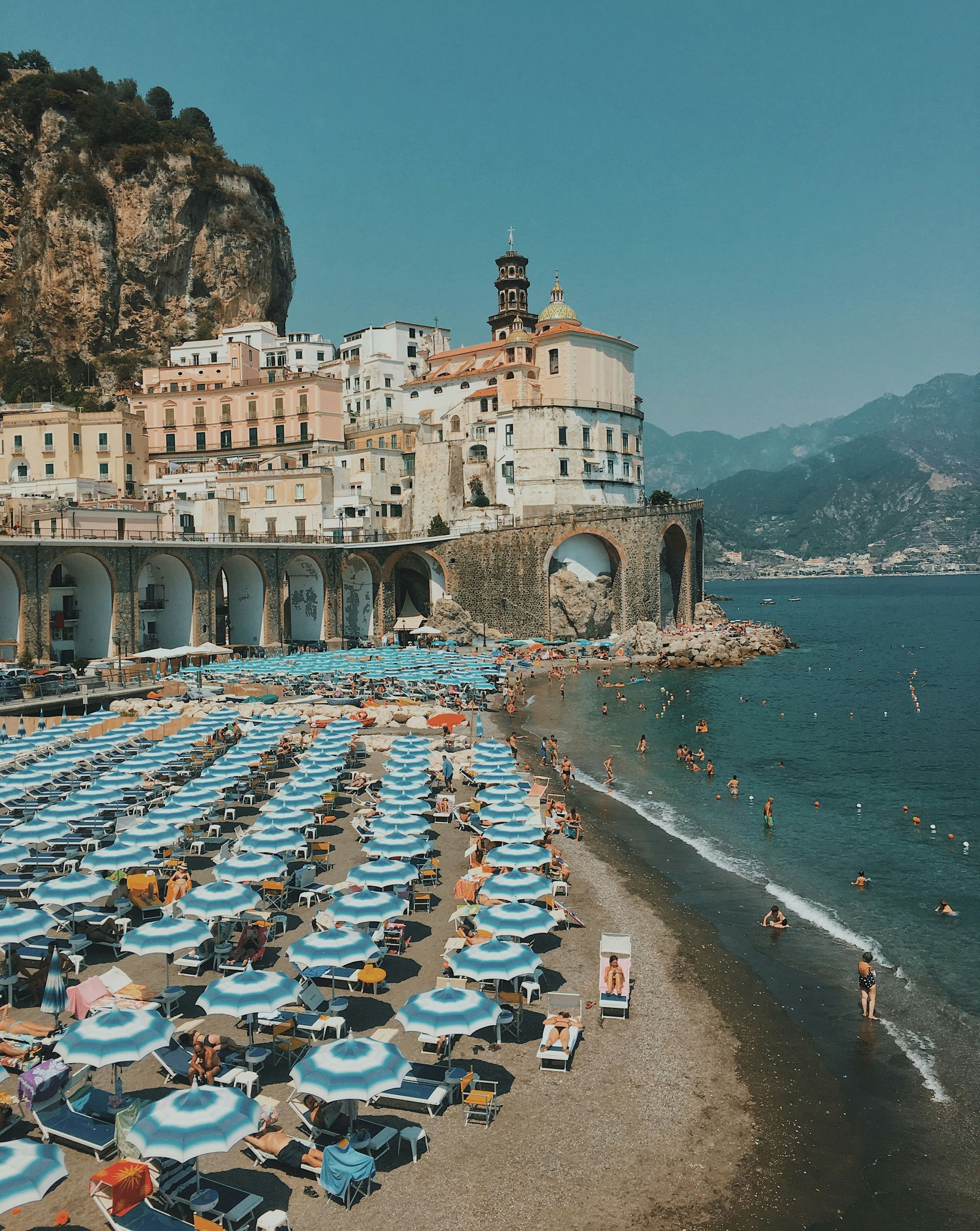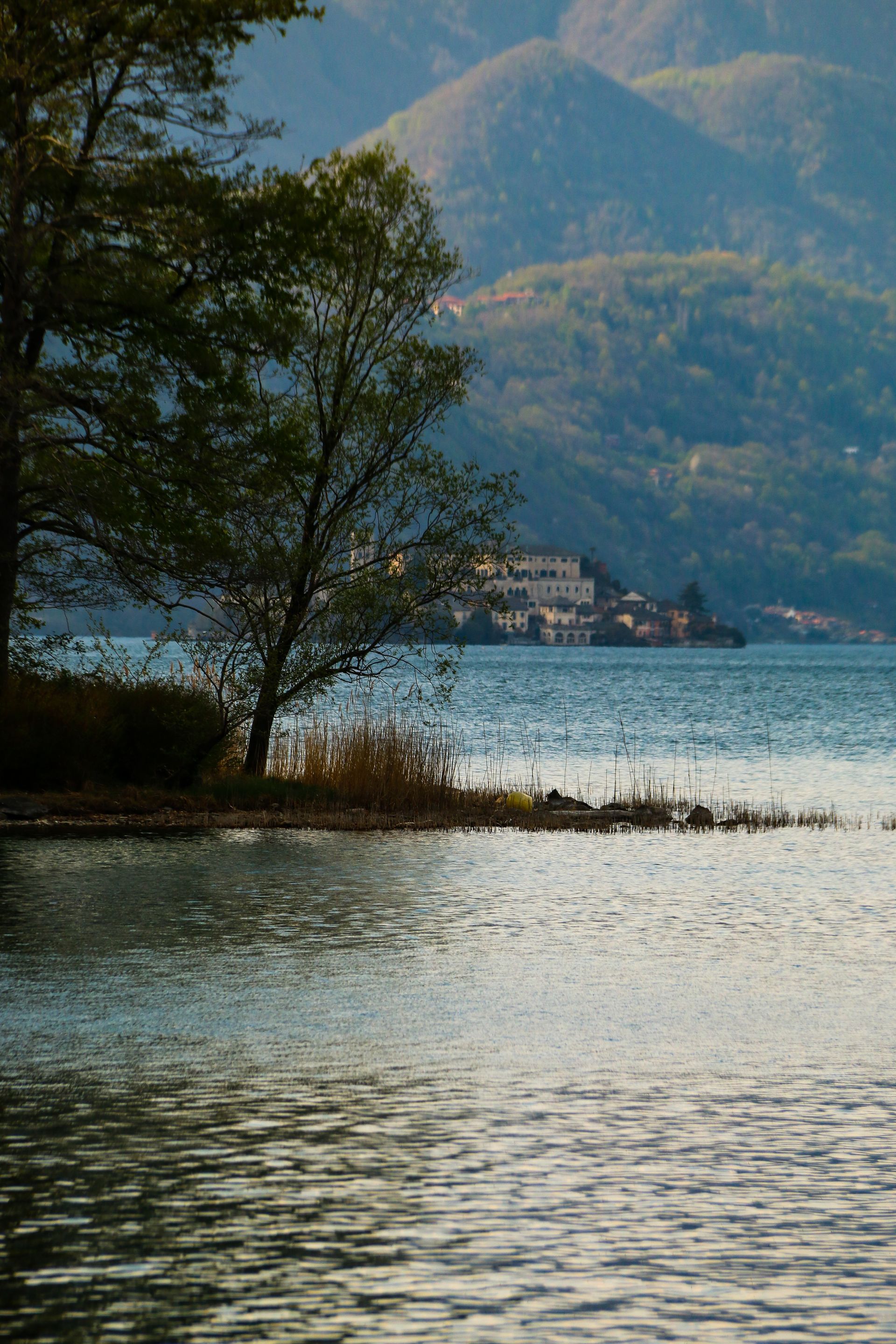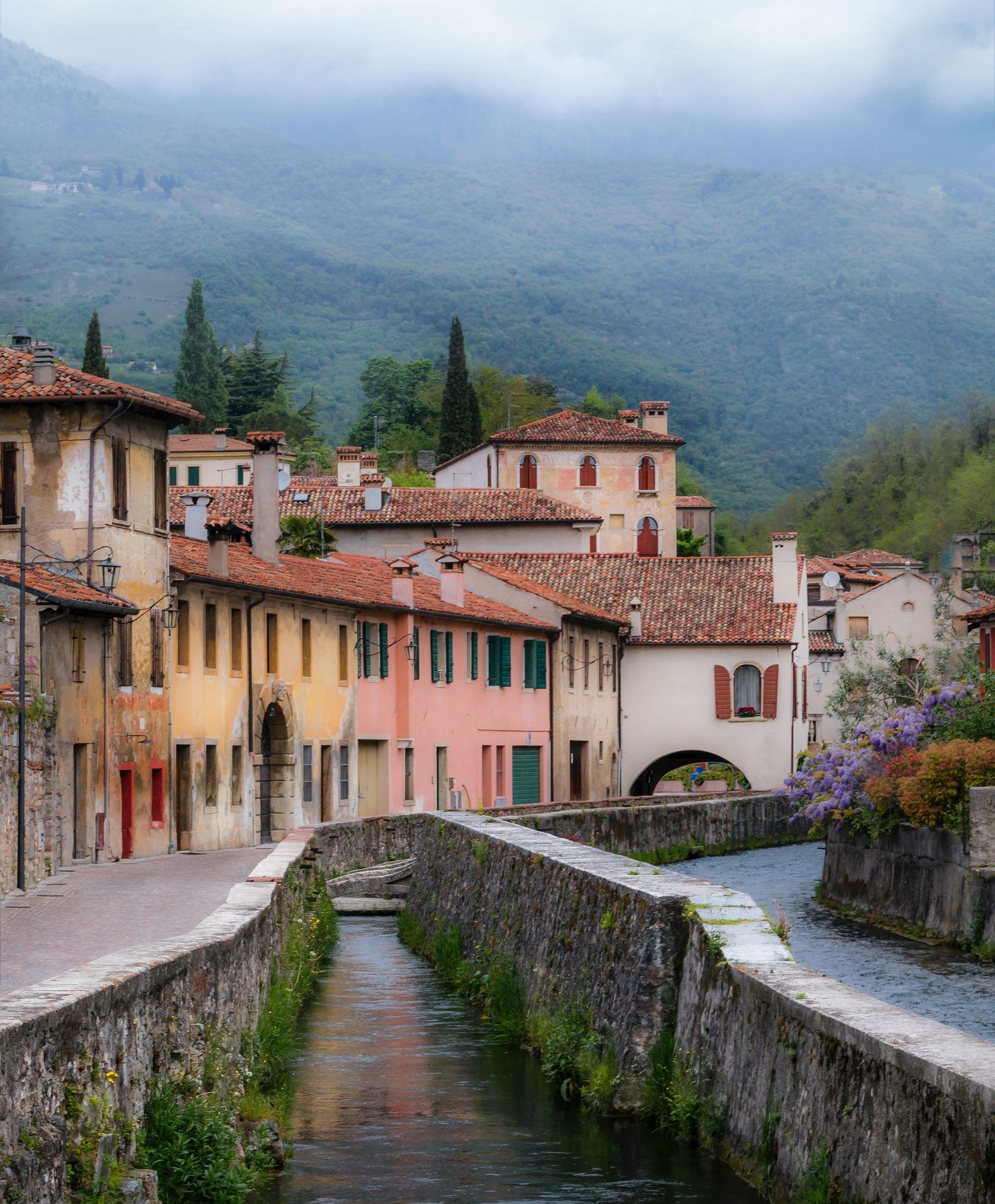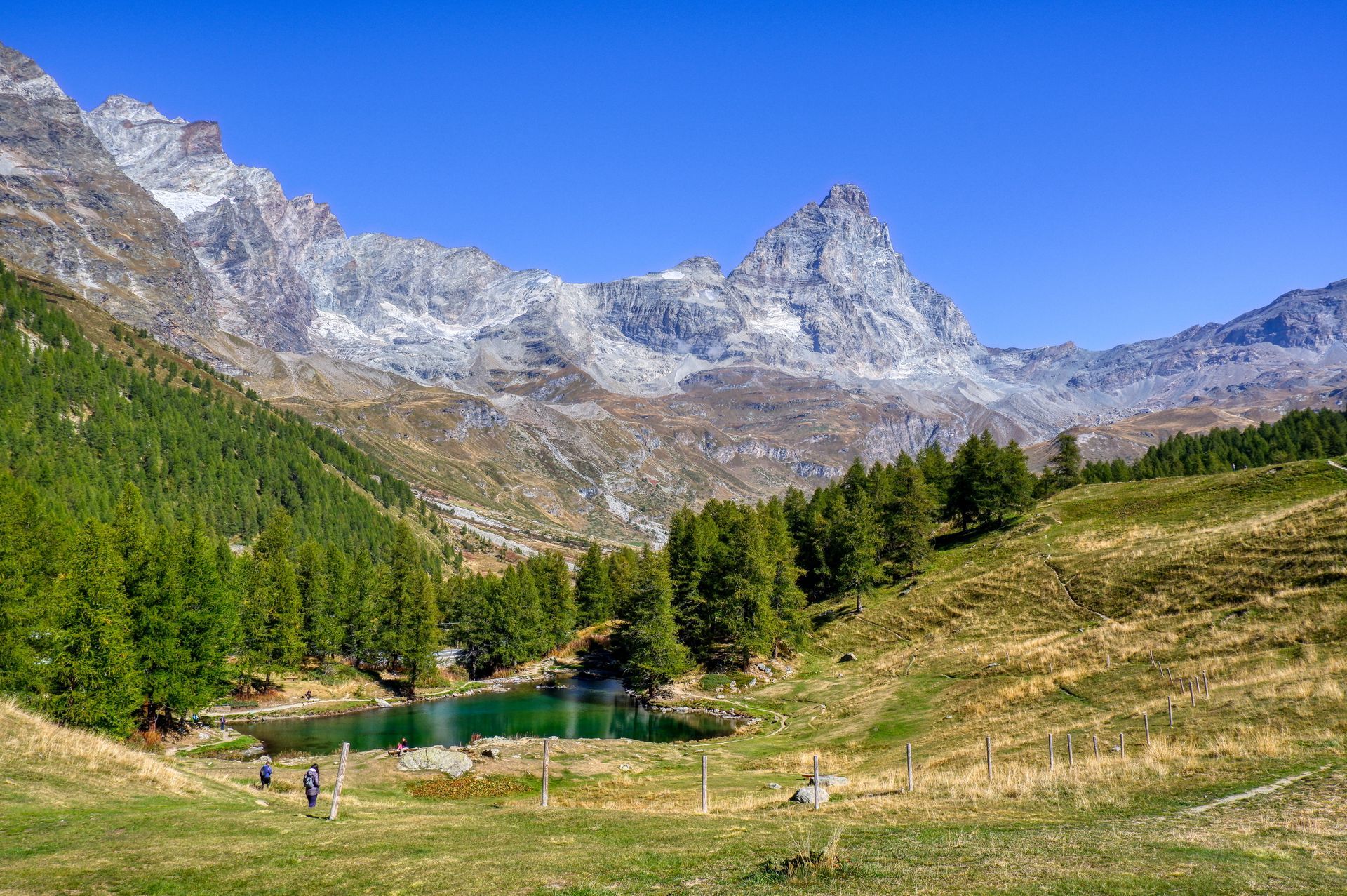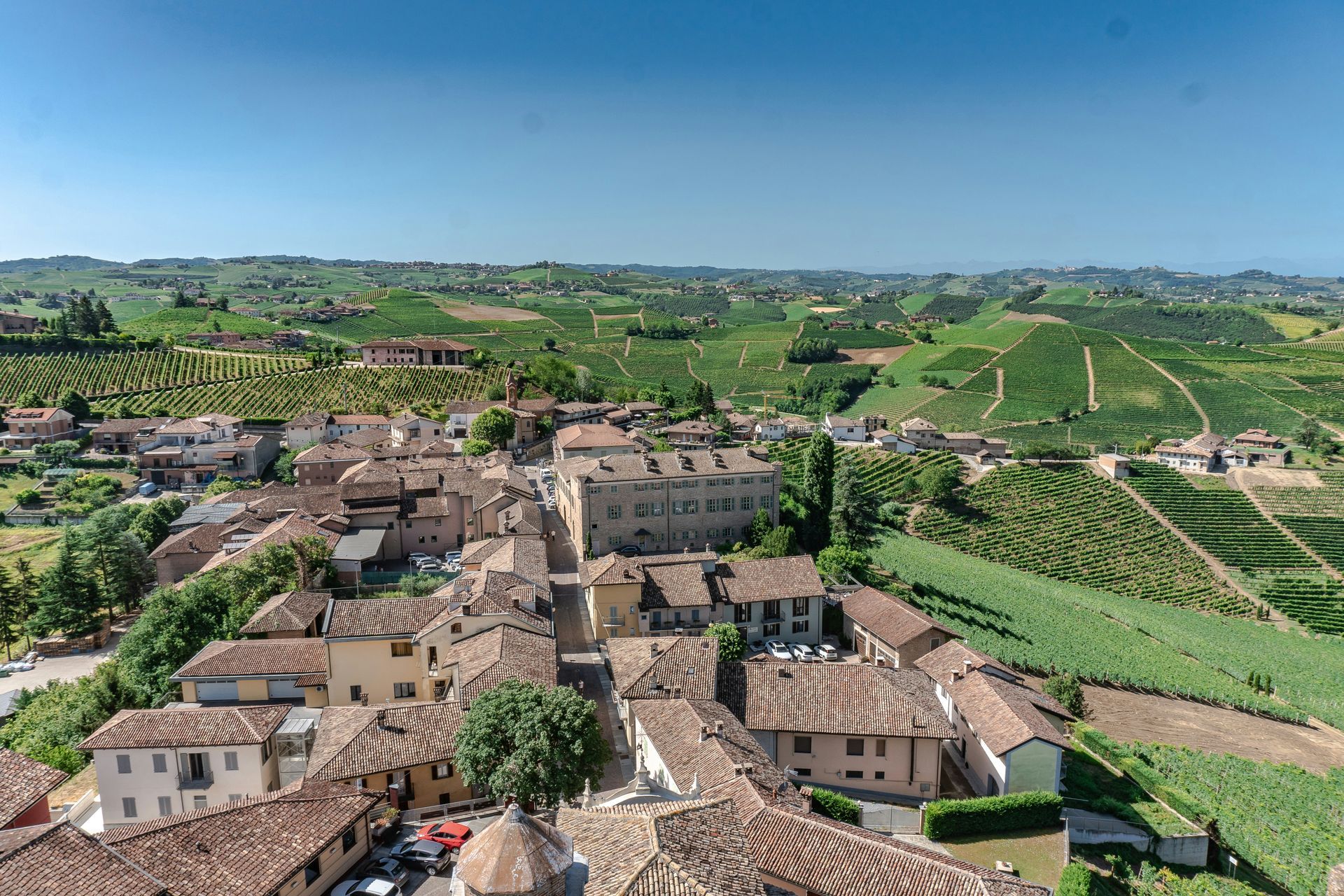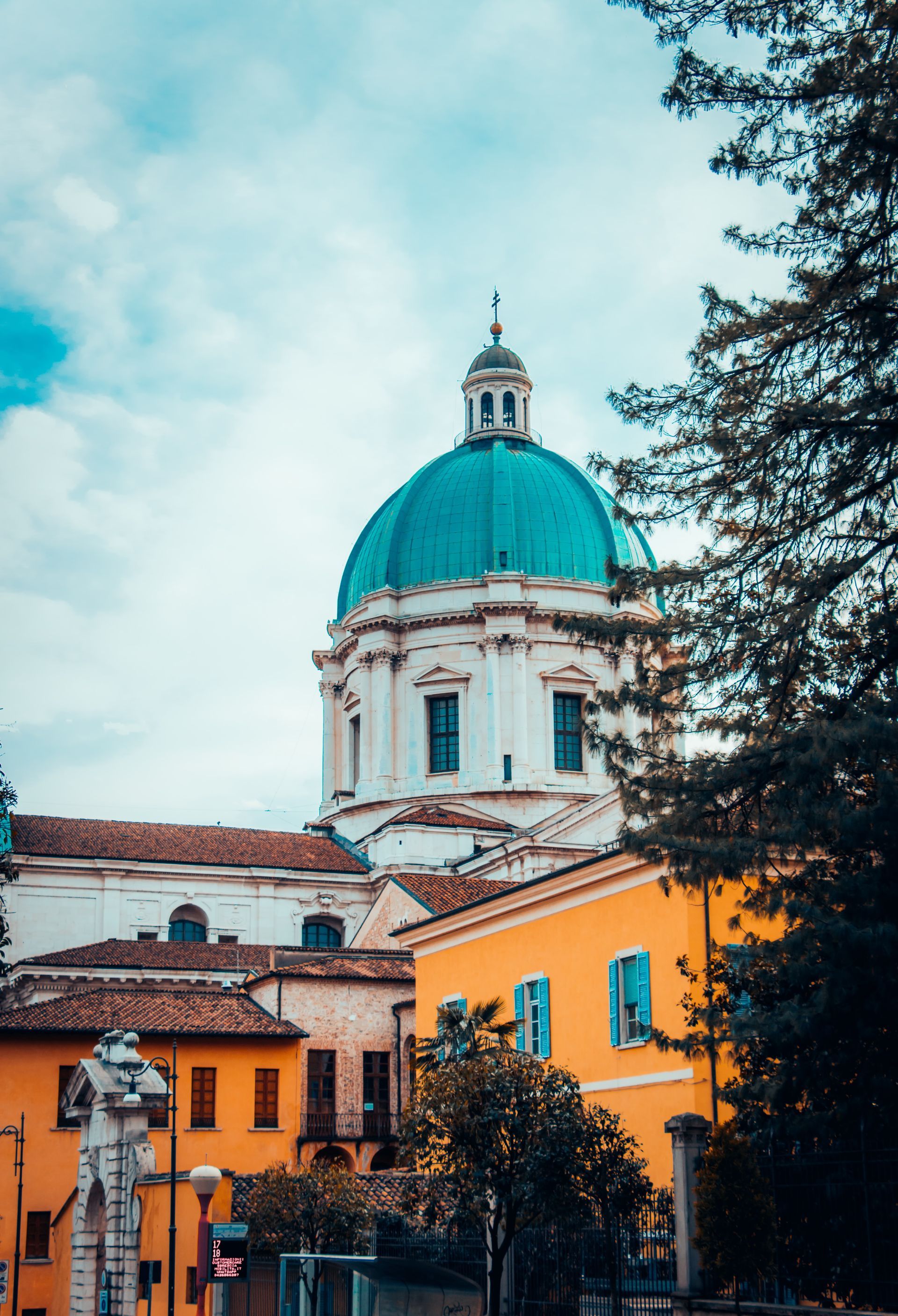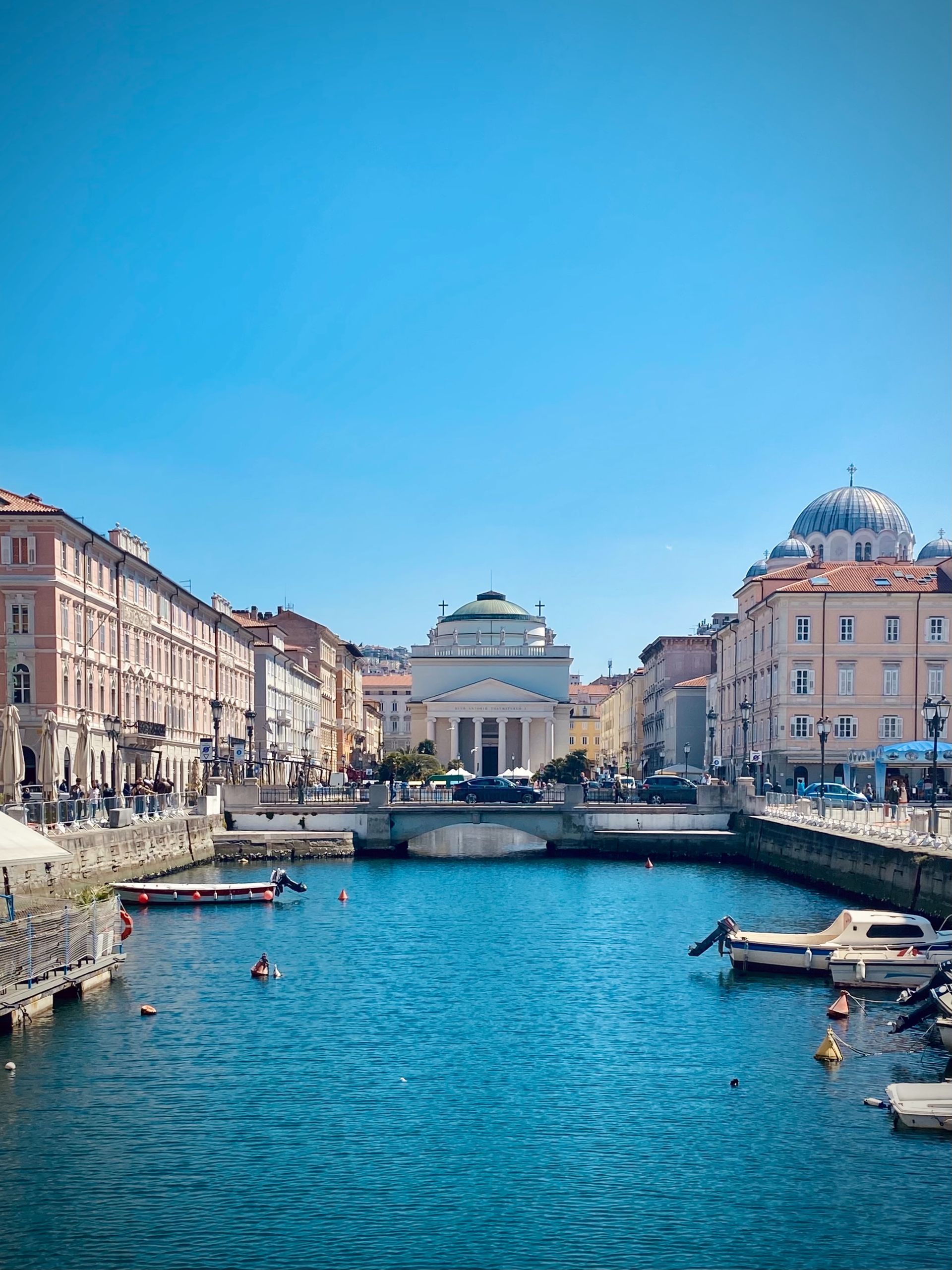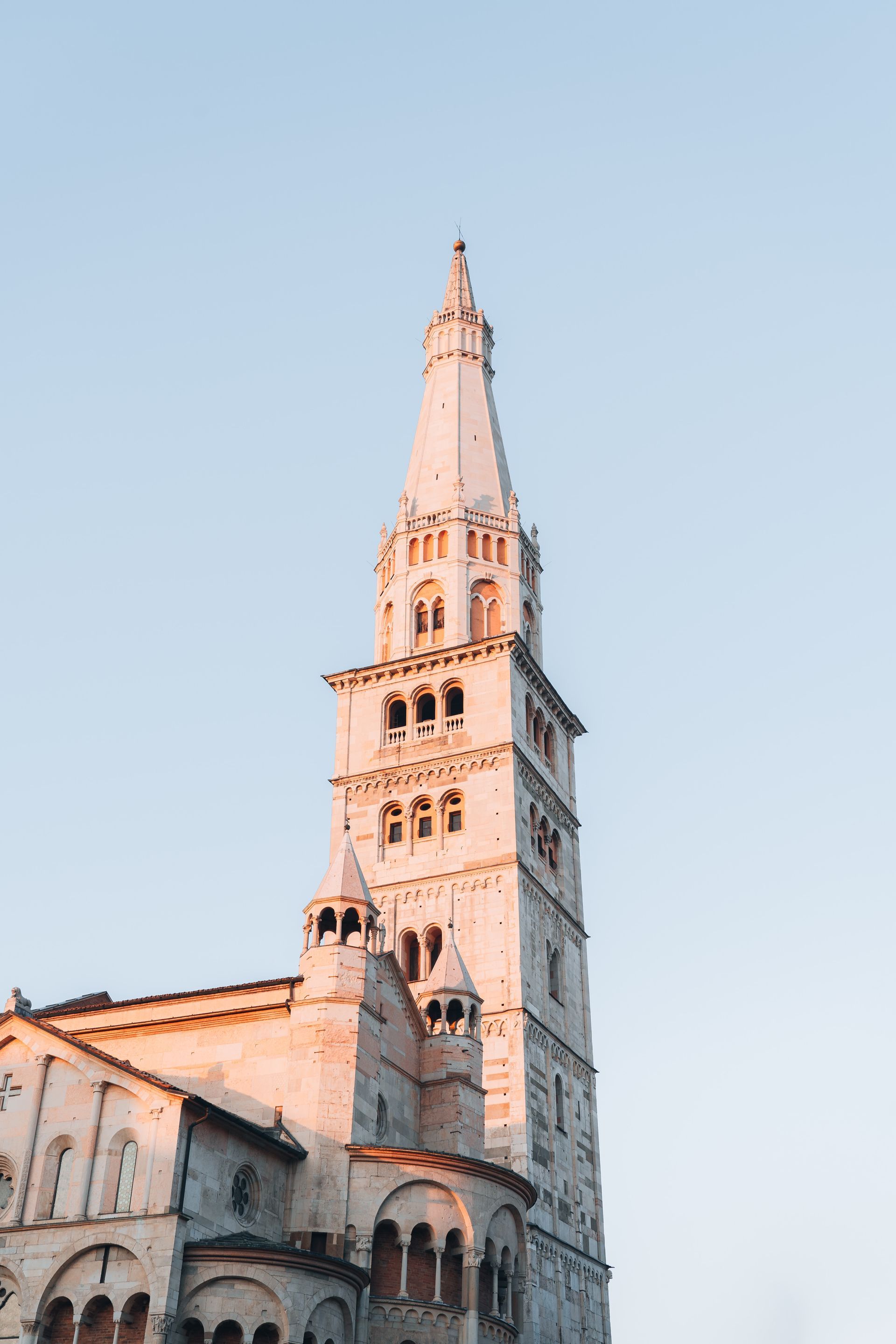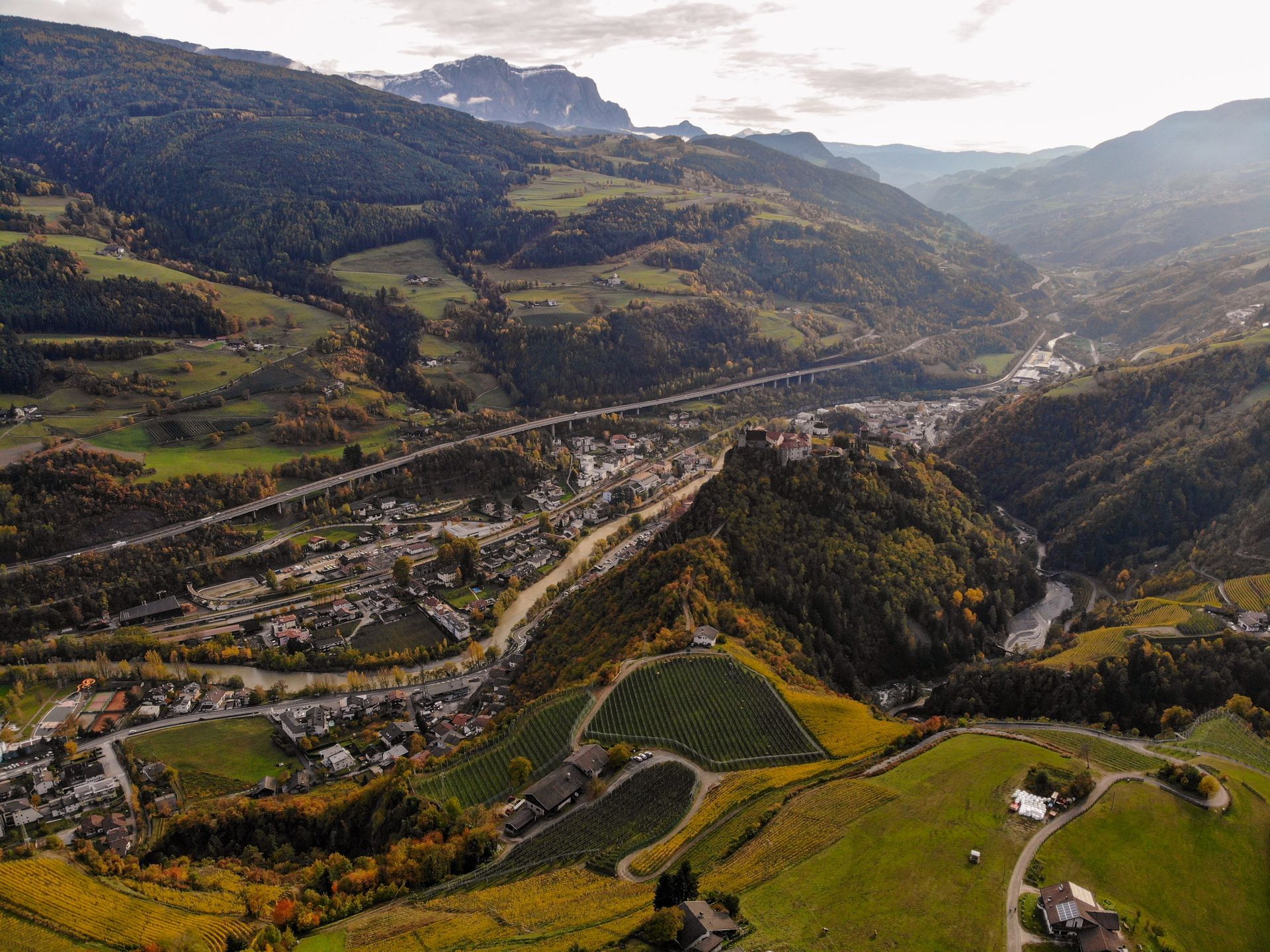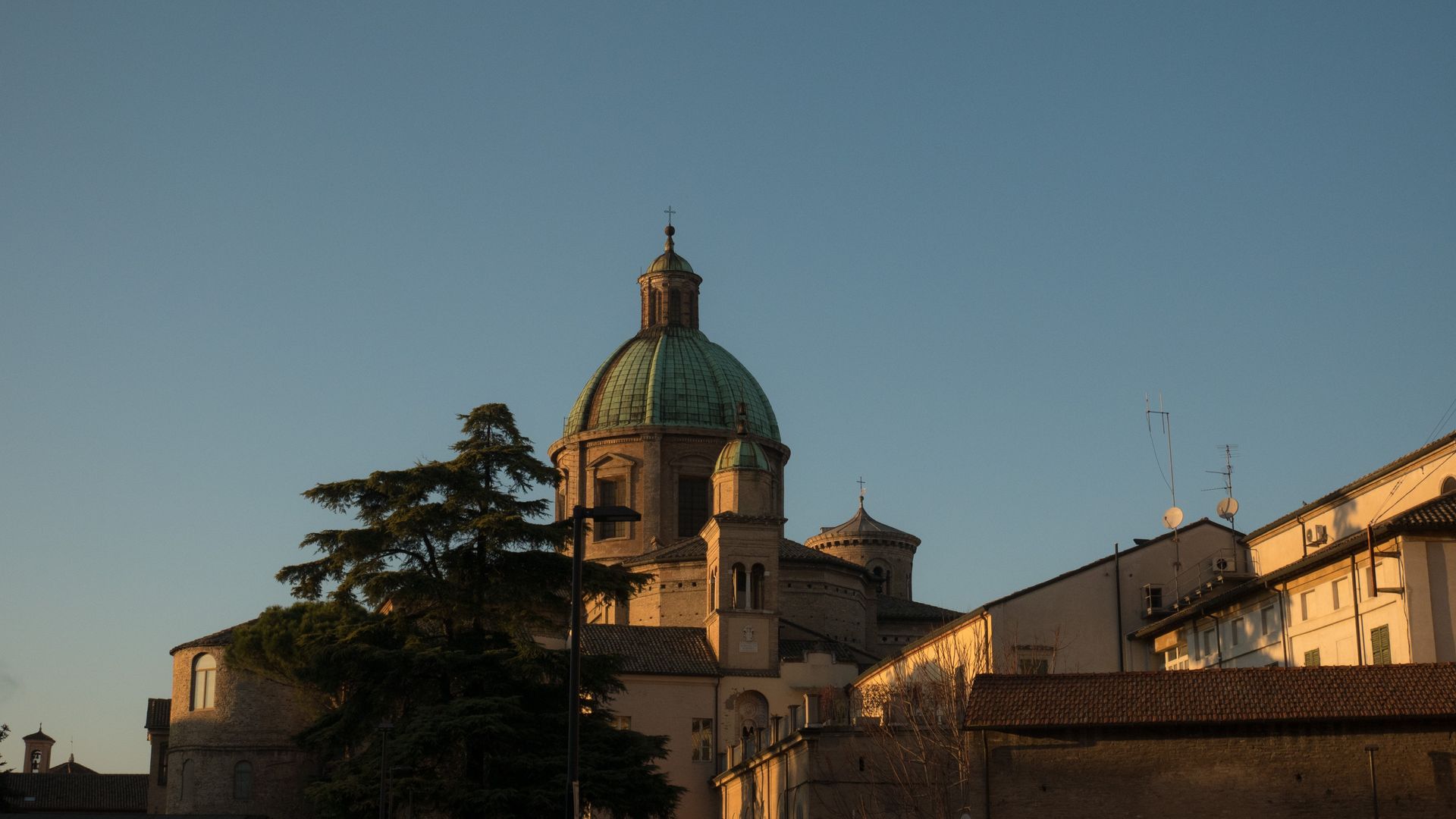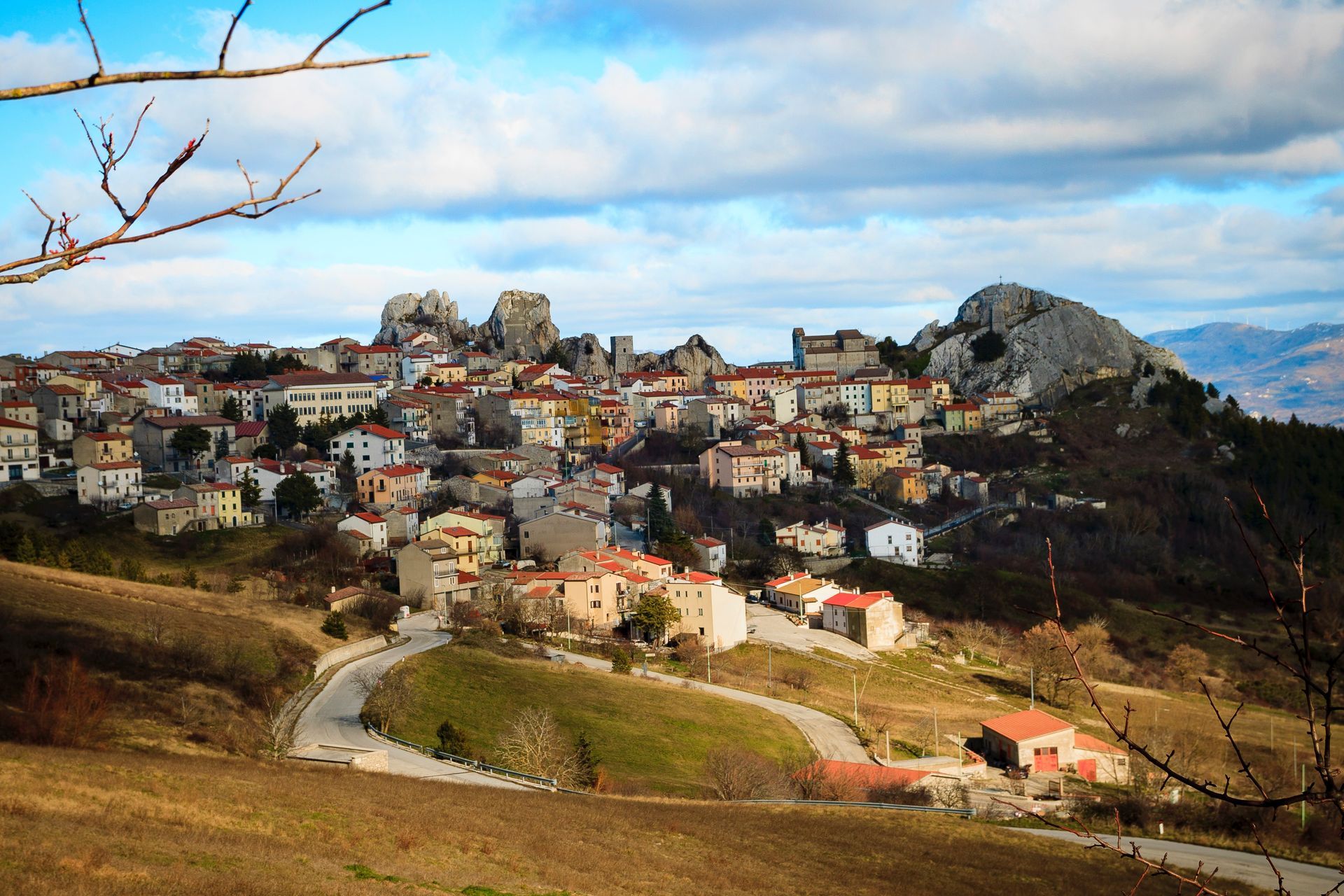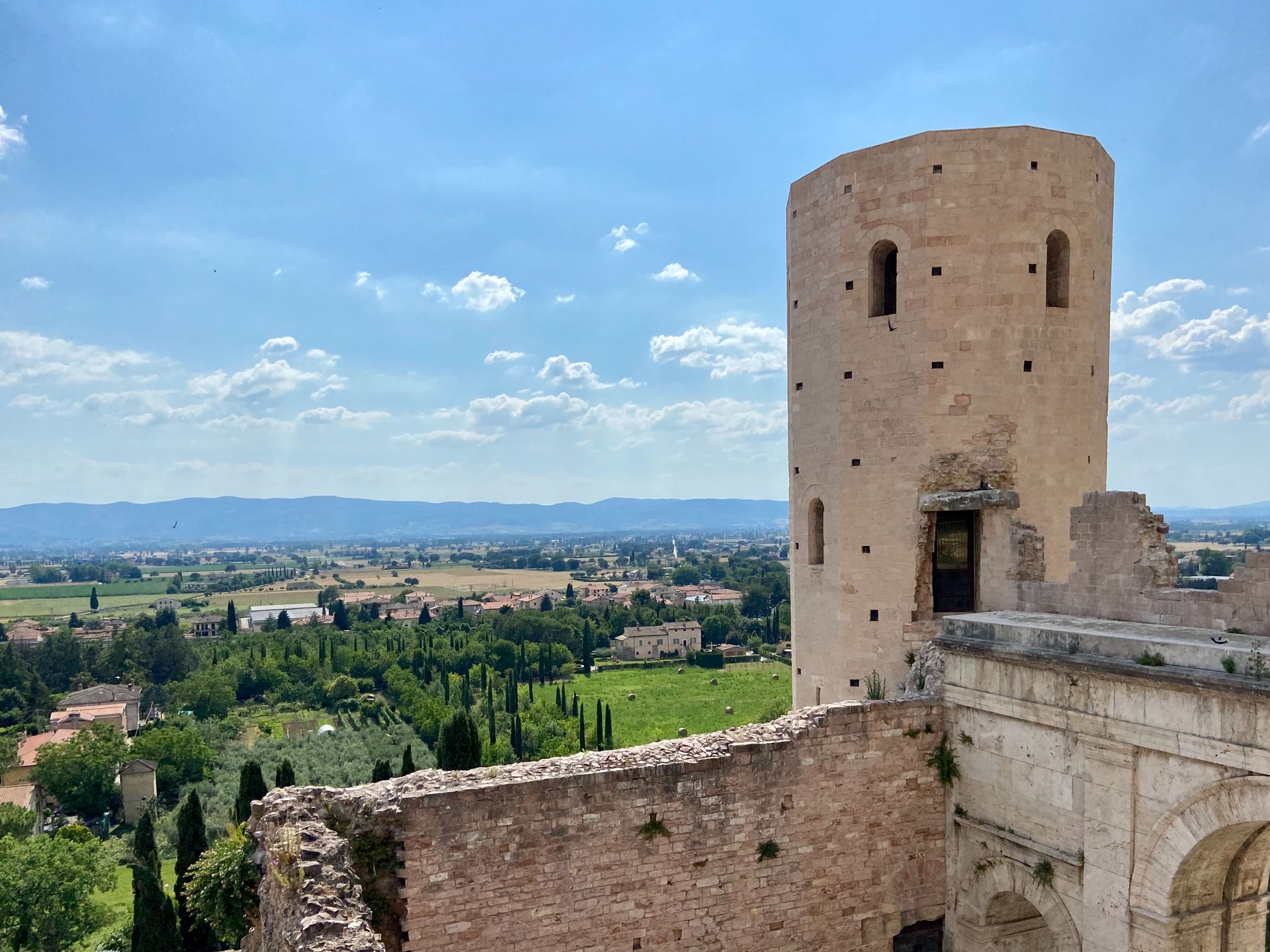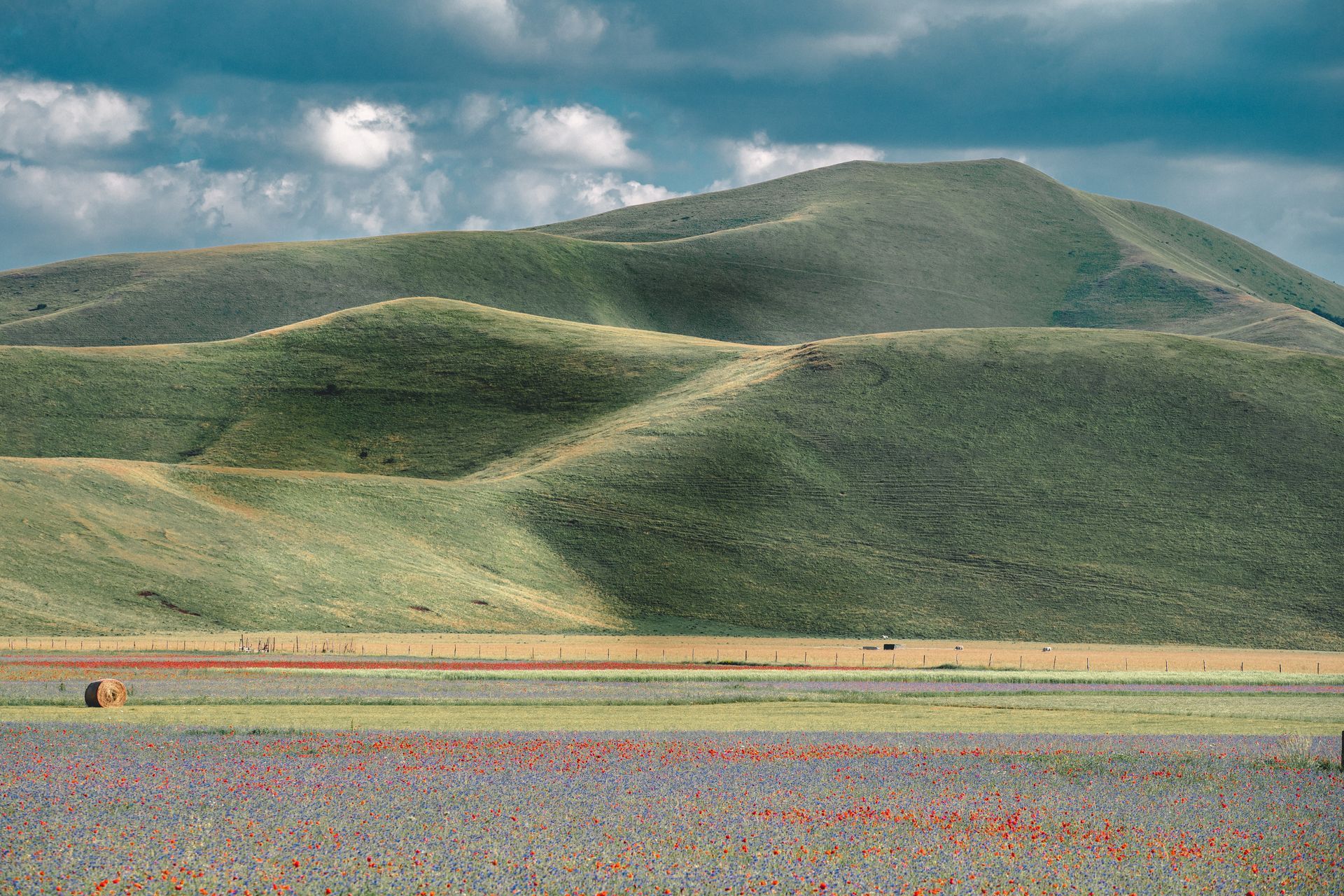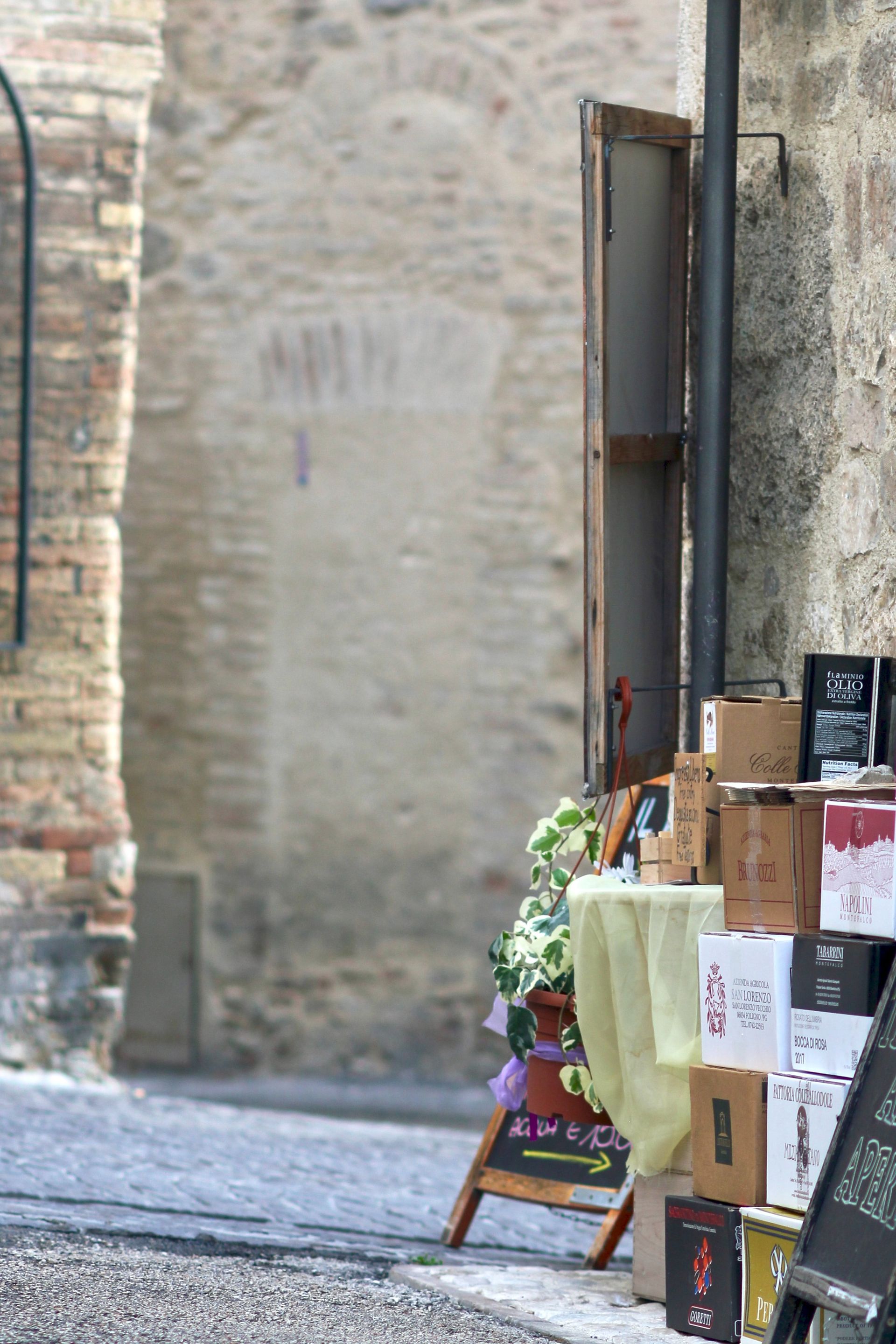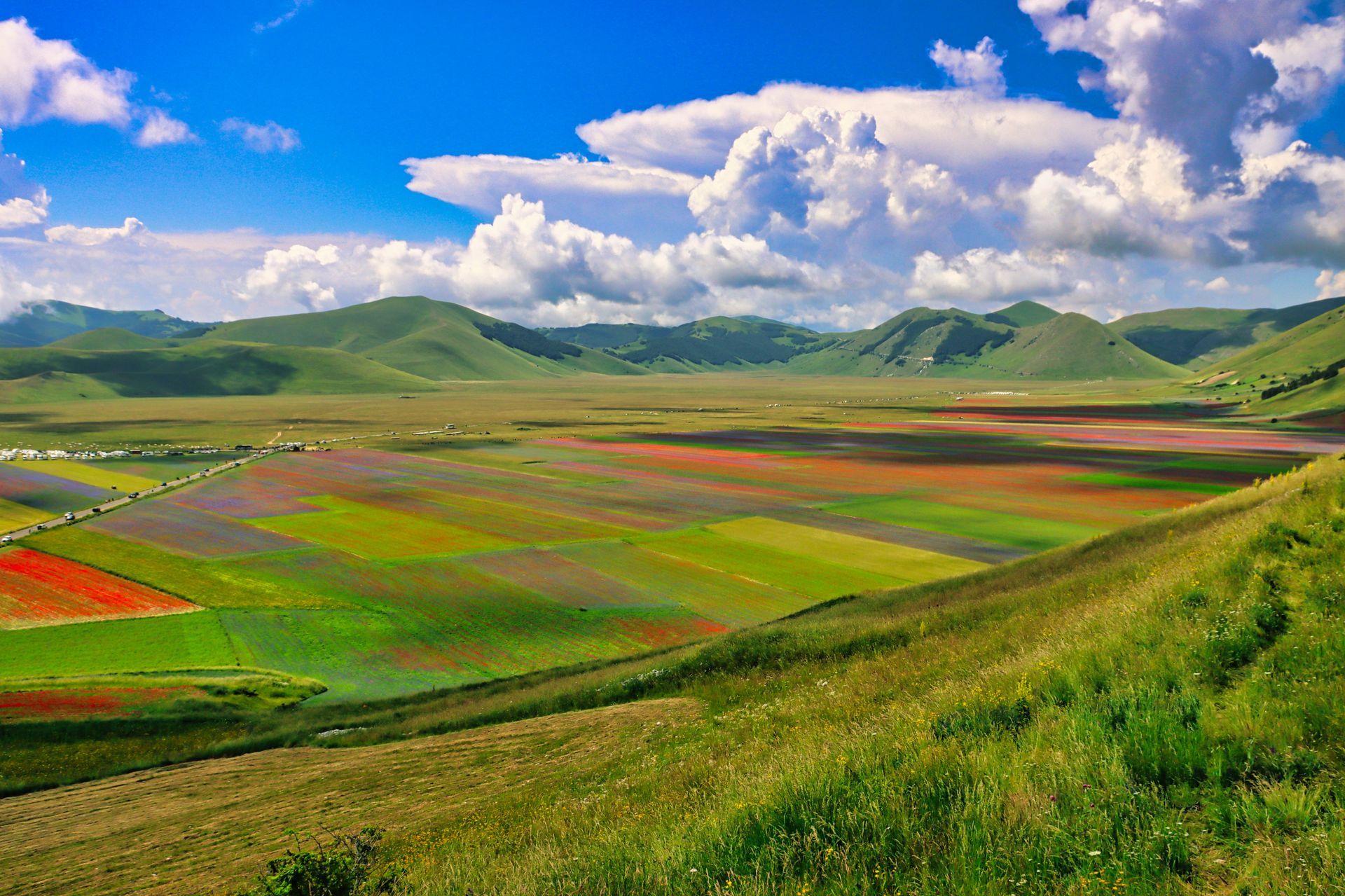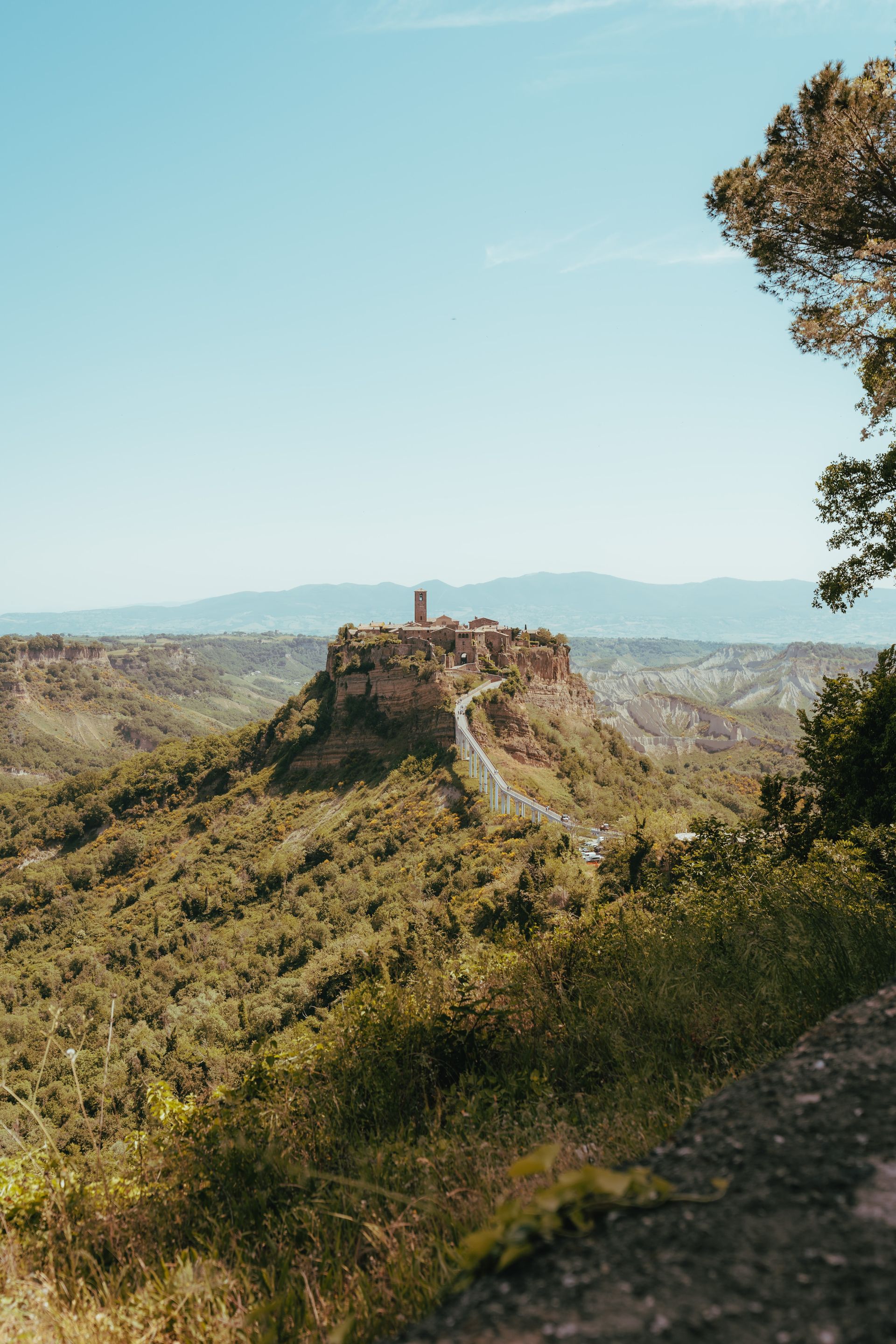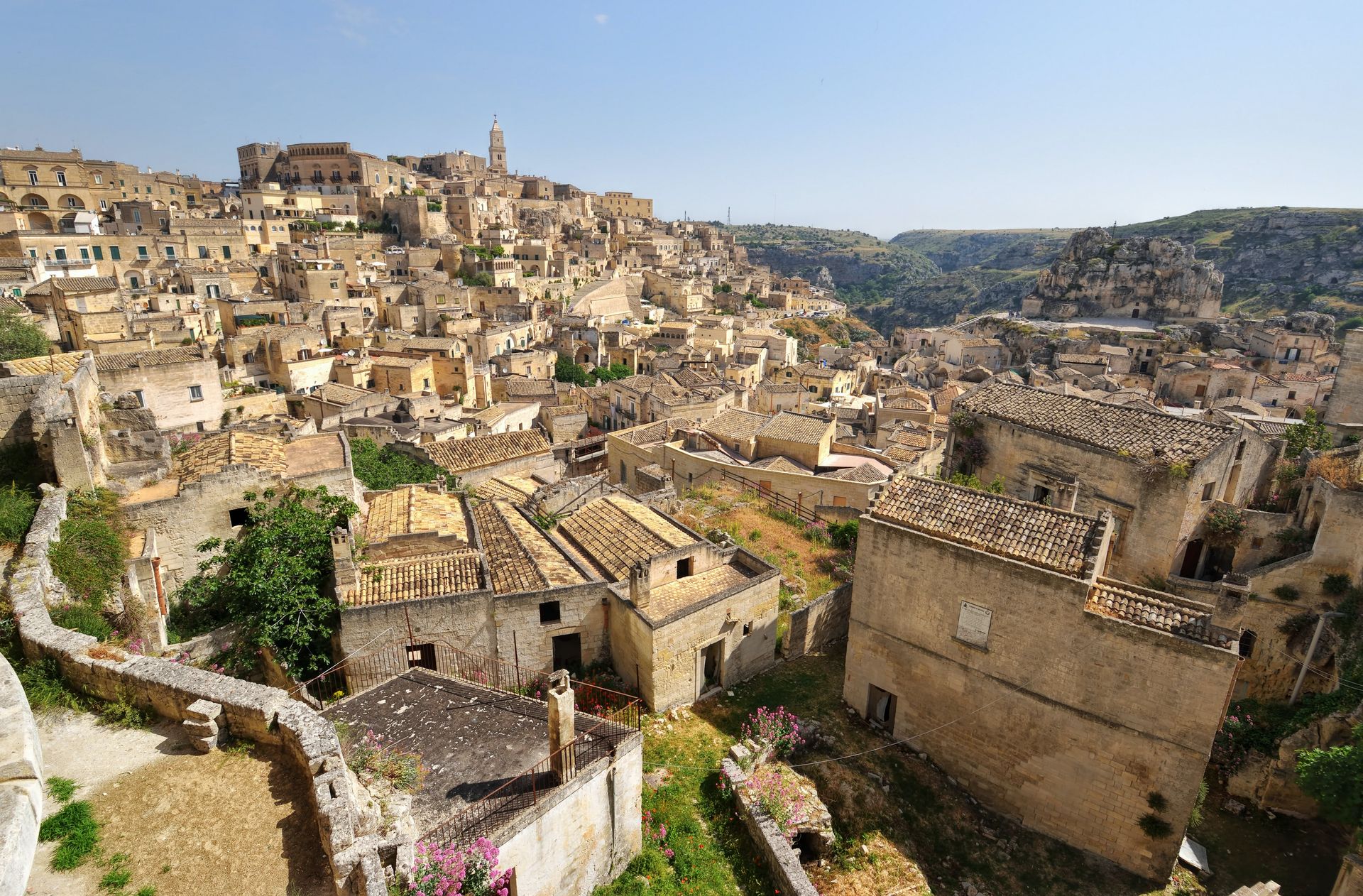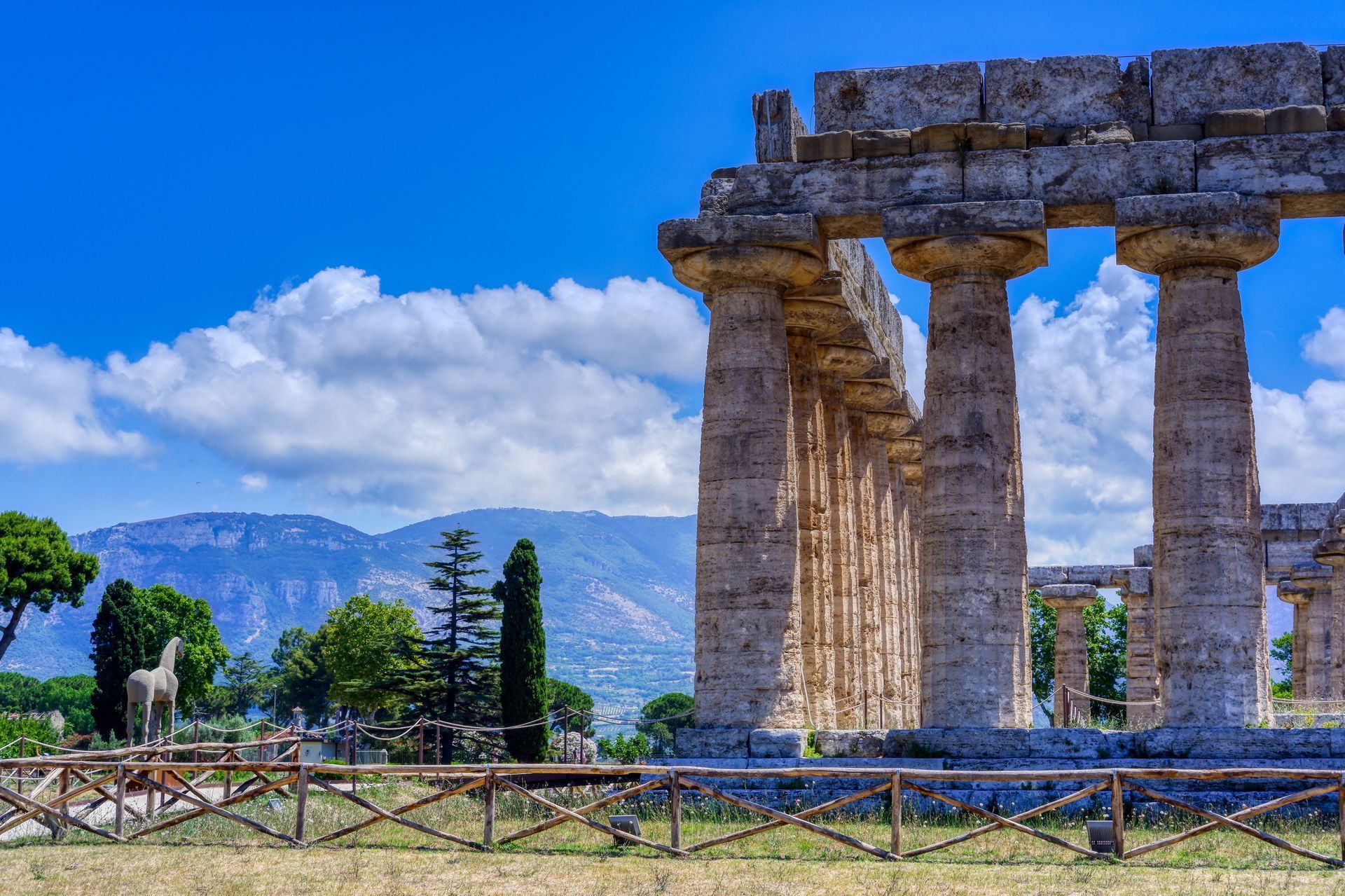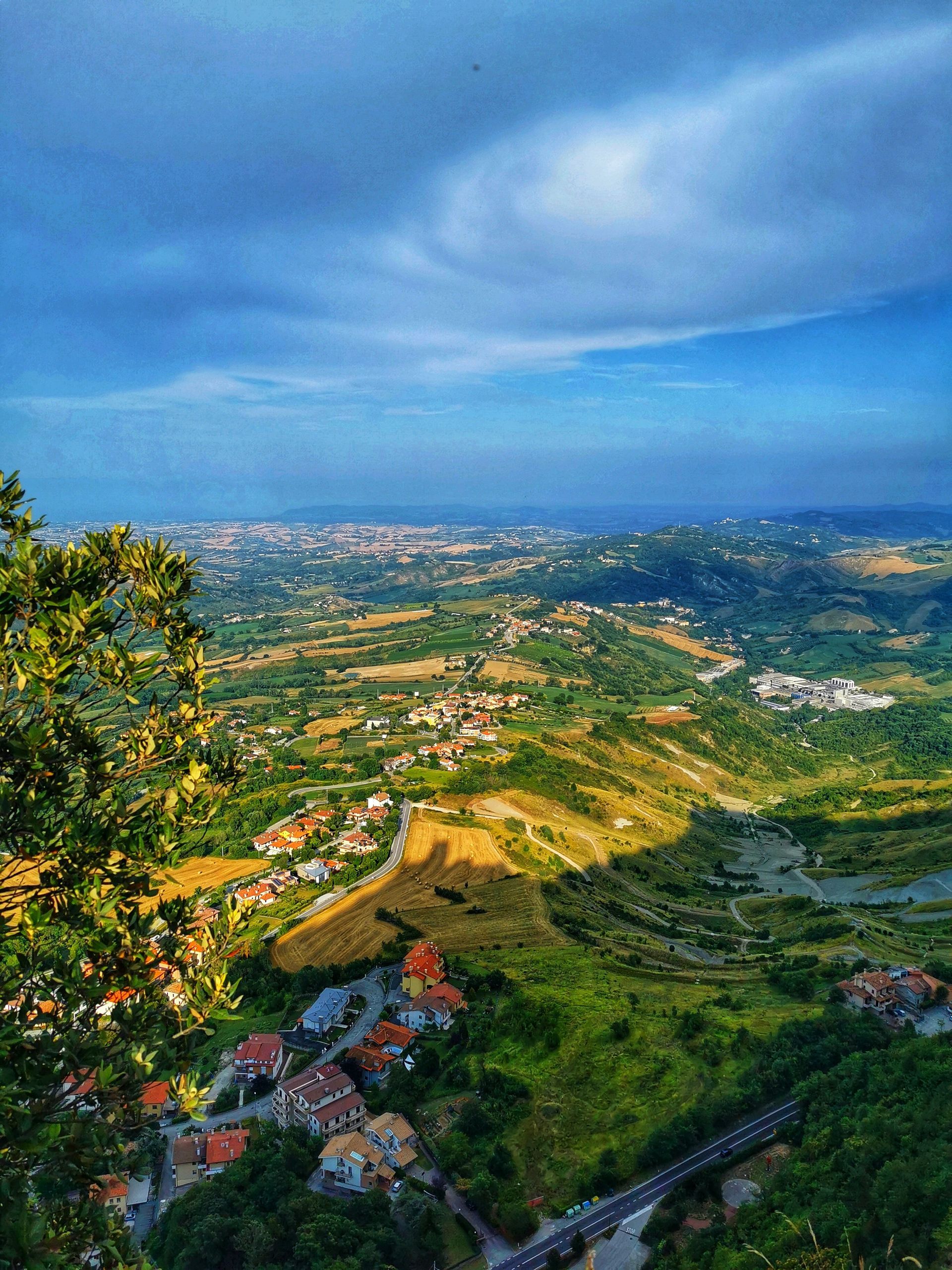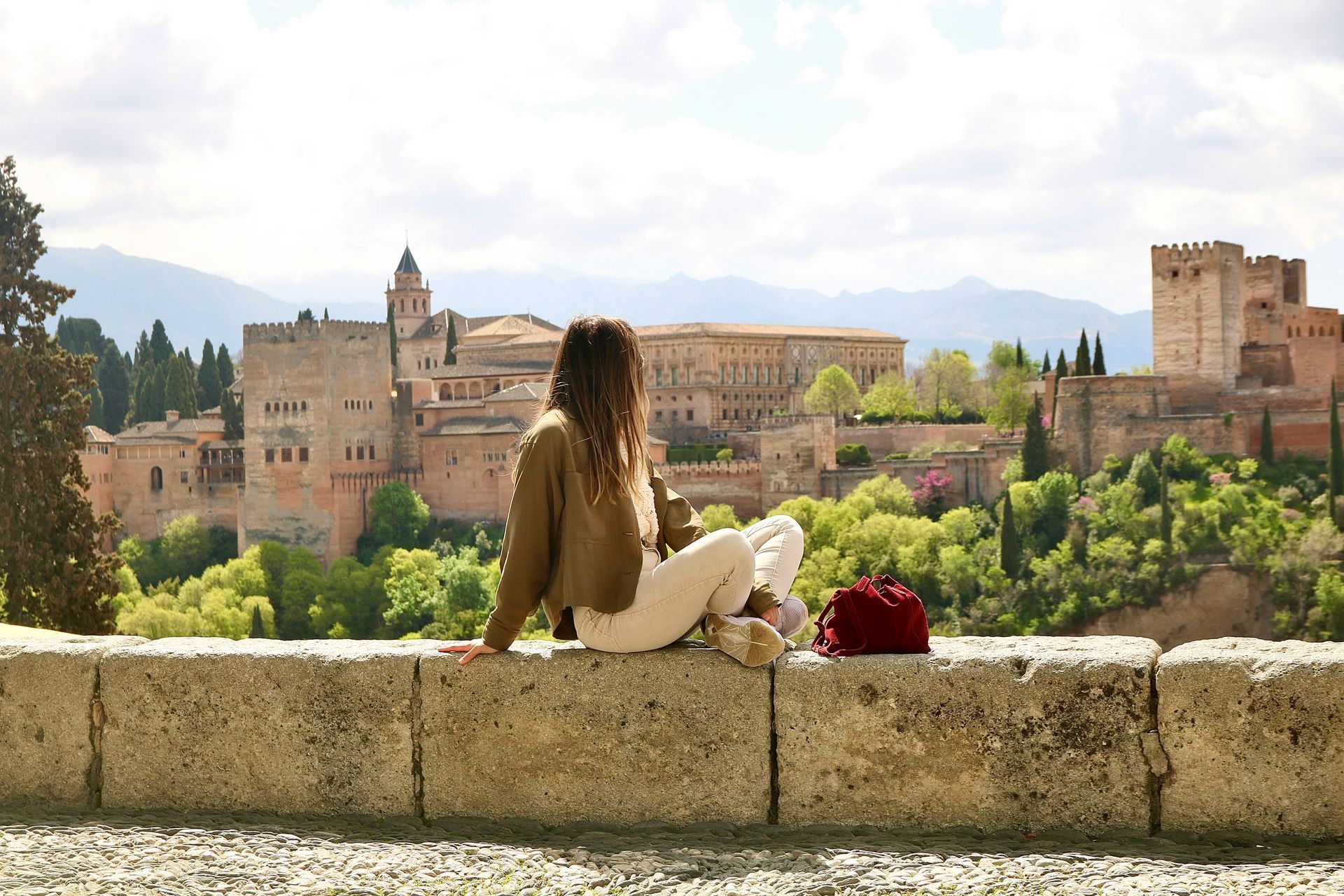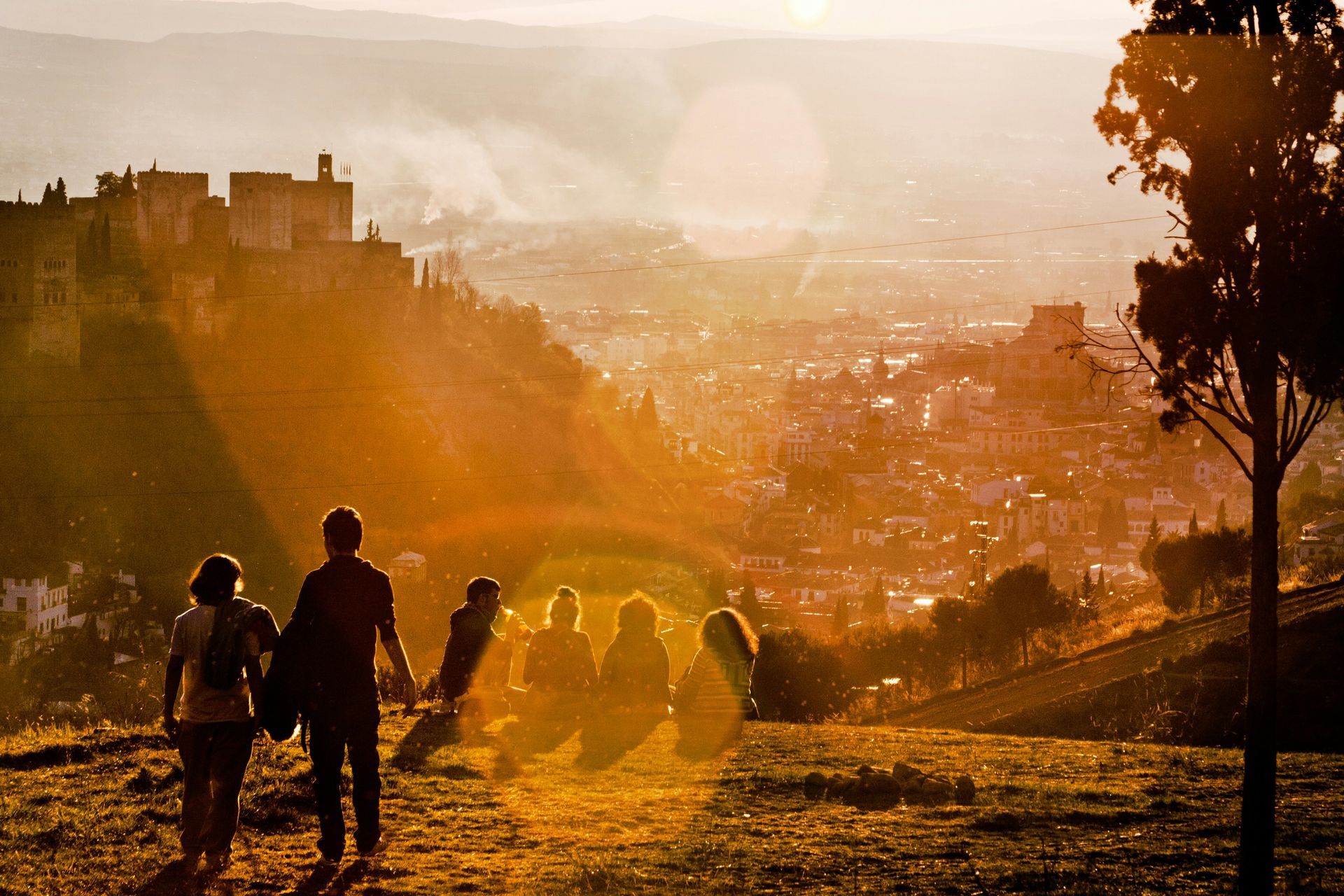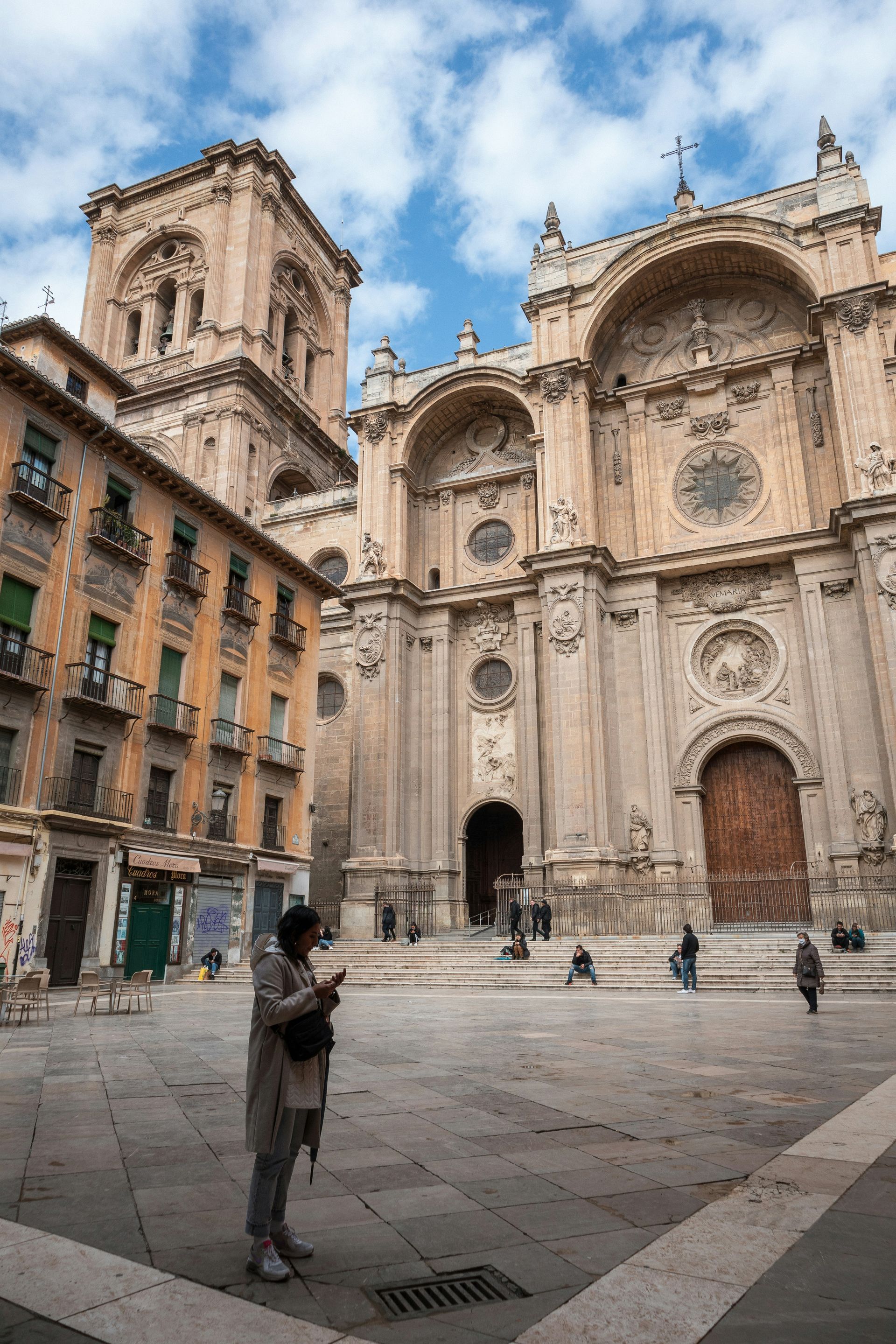Spreading Smile across the globe
Hidden Gems of Northern Italy
Hidden Gems of Italy are a testament to the country's diverse and enchanting beauty, often concealed from the traditional tourist routes. While Italy is celebrated for its iconic cities like Rome, Florence, Venice, and the Amalfi and Cinque Terre coasts, it's the lesser-known destinations that promise a unique journey. These unexplored regions offer travellers a chance to experience Italy's authentic culinary delights, rich historical narratives, and stunning natural landscapes. From the northern reaches to the southern shores, these Hidden Gems of Italy reveal a different facet of this remarkable nation.
Lake Orta - Piedmont
Hidden Gems of Italy come to life at Lake Orta, tucked away near the Swiss border in the heart of Piedmont. This hidden paradise often evades the spotlight compared to its more famous counterparts like Lake Como and Lake Garda. The historic town of Orta San Giulio, with its Baroque and Medieval architecture, cobbled streets, and idyllic Piazza Motta, enchants visitors. The glistening waters of the lake itself invite moments of serenity. What makes Lake Orta truly extraordinary is the mysterious island at its centre—a tranquil sanctuary inhabited by resident nuns.
Treviso - Veneto
Among the Hidden Gems of Italy, Treviso stands as a city in the Veneto region that retains its genuine northern Italian charm. Meandering through its narrow cobbled lanes, picturesque canals, and medieval city walls feels like a step back. Positioned on the fringes of the renowned Prosecco wine region, Treviso provides a delightful excuse for an aperitivo with a glass of Italy's renowned sparkling Prosecco.
Aosta Valley
Nestled among the bordering landscapes of Switzerland and France, the Aosta Valley showcases breathtaking alpine scenery, perched castles, and traditions that thrive throughout the year. When spring and summer arrive, the region's walking trails entice explorers. This season also brings lively festivals that celebrate folk traditions that date back to medieval times. Be sure to savour the local cheese Fontina, a culinary delight that embodies the spirit of this Hidden Gem of Italy.
Alba - Piedmont
Alba, a sought-after destination among Italy's hidden gems, is situated in the vineyards of the Langhe Hills. Once adorned with a hundred towers, Alba exudes a charming rural ambience. It's renowned for its autumn truffle festival, a gastronomic event that captures the essence of the region. Alba is also celebrated for its dark chocolate, hazelnut groves, white truffles, and prestigious wineries. It's from this very region that the sought-after Barolo wine originates.
Camogli - Liguria
Camogli, a typical and vibrant Italian seaside village on the Ligurian Riviera di Levante, perfectly embodies the spirit of the Hidden Gems of Italy. Towering, brightly painted houses dominate the town, and it has become a magnet for visitors seeking pristine beaches, Ligurian cuisine, the rustic fishing marina, Italian culture, and a tranquil natural setting. Camogli has earned its reputation for culinary excellence, focusing on fish and seafood, particularly anchovies and tuna, as well as the iconic pesto sauce made from basil and pine nuts.
Brescia - Lombardy
Hidden Gems of Italy often come alive through history, and Brescia is no exception. In this small city, history unfolds through a tapestry of architectural styles, spanning Roman, Medieval, Renaissance, Baroque, and even Art Deco. Walking through Brescia feels like a journey through time, and a visit to the captivating Piazza della Loggia, framed by a stunning Venetian-style palace at its heart, is a must for history enthusiasts.
Trieste
Trieste is a refreshingly unique destination, an Italian city positioned near the Slovenian border with its dialect that's a delightful blend of Austrian-German, Greek, Croatian, and Italian. Trieste's neoclassical waterfront is a sight to behold, with its marina brimming with stylish, glimmering yachts. The city's offerings include clear blue skies, expansive sandy beaches, city lidos, and the surrounding vineyards. Trieste is a Hidden Gem of Italy that belongs on every traveller's Northern Italian itinerary.
Modena - Emilia-Romagna
Modena is famed for its Hidden Gems of Italy, including balsamic vinegar, Luciano Pavarotti, the Romanesque cathedral, and the nearby Ferrari museum. Beyond these illustrious attractions, Modena reveals a treasure trove of remarkable restaurants. Massimo Bottura's Osteria Francescana has twice earned a place among the world's top 50 eateries, showcasing the culinary excellence of this Hidden Gem. While in Modena, don't miss the chance to savour local specialities like stuffed tortellini and sparkling Lambrusco wine, the perfect complement to your gastronomic journey.
Chiusa / Klausen - South Tyrol
Chiusa, also known as Klausen, is one of Italy's most picturesque villages. It is situated on the banks of the Isarco River in the South Tyrolean region near the Austrian border. Chestnut groves, green fields, vineyards, and farmsteads surround the town. In the village itself, visitors are captivated by narrow alleyways, coats of arms, large bay windows, crenellated facades, and the two main squares.
Ravenna - Emilia-Romagna
Ravenna offers a treasure trove of experiences among the Hidden Gems of Italy. This city is a feast for the senses, with its diverse offerings of food, music, art, culture, history, beaches, wine, and mosaics. Ravenna is home to eight UNESCO-listed sites, making it a must-visit for history and art enthusiasts. It's also known for its two-month-long music festival, Dante Alighieri's tomb, local culinary delights, nearby beach resorts, and the opportunity to explore pinewood forests. The city's fame is derived from its stunning mosaics, dating from the fifth and sixth centuries, scattered throughout the town.
In conclusion, Italy's Hidden Gems invite you to embark on a journey less travelled, where the rich tapestry of history, diverse cuisine, and breathtaking landscapes come to life. These lesser-known destinations provide an authentic Italian experience, away from the bustling crowds, revealing the nation's soul in its purest form. Explore these Hidden Gems to uncover Italy's hidden treasures.
Hidden Gems of Central Italy
Hidden Gems of Italy beckon the adventurous traveller to explore the lesser-known treasures that this remarkable country holds. From the picturesque valleys of Tuscany to the medieval charm of Umbria, the mysterious landscapes of Molise, and the architectural wonders of San Gimignano, these destinations promise unforgettable experiences.
Garfagnana - Tuscany
The Garfagnana region is a hidden gem in the beautiful Tuscan valley north of Lucca. It is crossed by the Serchio River, and the landscape is characterized by fertile greenery, rugged mountains, and charming villages. Outdoor activities such as hiking, walking, and mountain biking are enjoyed by many people in this area. Garfagnana is home to several one-of-a-kind attractions, including a ghost town, a wind cave, and the Devil's Bridge at Borgo a Mozzano.
Gubbio - Umbria
Umbria hides many treasures, and a particular favourite among Hidden Gems of Italy is the Medieval hilltop town of Gubbio. Gubbio, a city with a history dating back over 2,000 years, is a maze of cobbled streets and stone buildings that have been perfectly preserved. Visitors can take a cable car to the summit of Mount Ingino to enjoy panoramic views of the surrounding area. In addition, Gubbio hosts Italy's oldest event, the Corsa dei Ceri, in which teams race through the streets carrying massive wooden candles.
Molise
Molise is Italy's second-smallest region and one of its best-kept secrets. Hidden Gems of Italy are plentiful here. The picturesque town of Agnone is renowned for its artisanal bells, produced by the oldest family-run bell foundry in the world. Meanwhile, Campobasso, the regional capital, boasts a stunning medieval old town. Molise offers a captivating mix of historical charm and natural beauty, with rugged mountains, rolling hills, and pristine beaches along the Adriatic coast.
San Gimignano - Tuscany
Nestled in the heart of Tuscany, San Gimignano boasts medieval architecture and, of course, its famous towers. The town's historic centre is a UNESCO World Heritage site, known for its fourteen stone towers that once symbolised wealth and power. San Gimignano offers a glimpse into medieval Tuscany, with well-preserved streets and squares that transport visitors to another time. Besides the towers, make sure to explore the Collegiate Church and indulge in the local Vernaccia wine, a crisp white wine produced in the region.
Spello - Umbria
Another gem in the heart of Italy, Spello enchants visitors with its winding medieval streets and stunning floral displays. Known as the "Città Infiorata" or "flower town," Spello hosts the Infiorata festival, during which the streets are carpeted with intricate flower petal designs. This event occurs in early June and is a magnificent spectacle. Outside of the festival, Spello's charm continues with its well-preserved historic centre and beautiful churches.
Trulli of Alberobello - Apulia
Apulia, or Puglia, is famous for its unique trulli houses, and Alberobello is the epicentre of this architectural marvel. These whitewashed conical homes are a UNESCO World Heritage Site that offers a glimpse into the region's history. Visitors can even stay in trulli that have been converted into accommodations, providing a truly immersive experience.
Norcia - Umbria
Nestled in the Sibillini Mountains, Norcia is renowned for its gastronomy. This charming town produces exceptional cured meats, particularly prosciutto and salami. For food enthusiasts, Norcia is a true Hidden Gem of Italy. Explore local shops, taste the region's specialities, and visit the beautiful town square. Nature enthusiasts will also find hiking trails and natural beauty in the nearby Monti Sibillini National Park.
Montefalco - Umbria
Montefalco is often called the "Balcony of Umbria" for its stunning views over the surrounding valley. This charming town is also known for its wine, particularly Sagrantino, one of Italy's most robust red wines. Montefalco's medieval centre is picturesque and hosts several churches with remarkable frescoes, making it a cultural and gastronomic gem.
Castelluccio di Norcia - Umbria
High in the Sibillini Mountains, Castelluccio di Norcia is a quaint village known for its stunning wildflower blooms in late spring and early summer. The surrounding plateau becomes a colourful tapestry, attracting photographers and nature enthusiasts. Besides the flowers, visitors can enjoy hiking and take in the breathtaking scenery. Hidden Gems of Italy like Castelluccio di Norcia provide a unique connection to nature and the changing seasons.
In the heart of Italy, a treasury of Hidden Gems awaits the intrepid traveller. From the mysterious ghost town of Garfagnana to the ancient charms of Gubbio, the enchanting landscapes of Molise, and the medieval splendours of San Gimignano, these lesser-known destinations reveal Italy's diverse beauty and rich history. Journey through the tranquil streets of Spello, marvel at the unique trulli houses in Alberobello, savour the culinary delights of Norcia, and bask in the vibrant blooms of Castelluccio di Norcia. These Hidden Gems of Italy promise an unforgettable adventure in a land of timeless wonder.
Hidden Gems of Southern Italy
Italy, a land of rich history, captivating art, and exquisite cuisine, is known for its iconic cities and world-famous landmarks. Despite the tourist-filled streets and crowded piazzas, the country holds many hidden gems—lesser-known destinations that offer a more intimate and authentic experience. These places, tucked away in various corners of Italy, are a testament to the nation's diverse and enchanting beauty, waiting to be explored by the discerning traveller. From medieval towns perched atop hills to charming coastal villages and ancient archaeological sites, the Hidden Gems of Italy promise unique adventures and unforgettable memories.
Civita di Bagnoregio - Lazio
Civita di Bagnoregio is often called the "Dying Town" because of its gradual erosion over the centuries. This medieval village is perched on a hilltop and can only be reached by a long footbridge. It's a unique destination, seemingly suspended in time, and is the perfect Hidden Gem for history buffs and photographers.
Matera - Basilicata
Matera, known for its cave dwellings, is one of Italy's most intriguing and unique destinations. The Sassi di Matera, a historic cave settlement, is a UNESCO World Heritage Site. Matera is gaining popularity but still qualifies as one of the Hidden Gems of Italy. Touring this labyrinth of stone-carved rooms and narrow streets offers an incredible historical journey.
Sperlonga - Lazio
Sperlonga is a charming coastal town characterized by its pristine beaches, winding alleys, and picturesque piazzas. Nestled between Rome and Naples, Sperlonga is often overlooked by travellers. A visit here reveals a relaxed and authentic Italian atmosphere, perfect for strolls and seaside relaxation. Take advantage of the Grotto of Tiberius, a cave once used as the emperor's villa and now a museum.
Paestum - Campania
The ancient ruins of Paestum, originally a Greek colony known as Poseidonia, provide an extraordinary window into Italy's history. The temples are exceptionally well-preserved, ranking among the best-preserved in the world. Paestum is also home to a fascinating archaeological museum that displays artefacts from the site. Enjoy a step back in time amid the Hidden Gems of Italy.
Castro - Apulia
Castro, a picturesque coastal town, boasts a historic centre perched on a rocky outcrop. Visitors can explore ancient churches, fortifications, and a charming harbour. Castro also has sea caves that can be explored by boat. The region's cuisine is a seafood lover's paradise, making this town a Hidden Gem for food enthusiasts as well.
Scilla - Calabria
Scilla, an idyllic coastal village in Calabria, offers stunning sea views and hidden beaches. The town is known for the Ruffo Castle, which dominates the landscape, and the legendary sea monster Scylla from Greek mythology. The charming village is a serene and lesser-known alternative to some of the more crowded Italian seaside destinations.
San Marino
San Marino is a microstate surrounded by Italy and is one of the world's oldest republics. It's a destination that's often missed, making it a true Hidden Gem. San Marino boasts dramatic mountaintop views, historic architecture, and unique attractions like the Guaita Tower and the Palazzo Pubblico. For collectors, the country is also known for its beautiful stamps and coins.
Conclusion
Discovering the Allure of Hidden Gems of Italy
Hidden Gems of Italy offers travellers an authentic experience, far removed from the tourist-packed cities and famous landmarks. These lesser-known destinations unravel the genuine charm, culture, history, and culinary wonders that make Italy an endlessly fascinating country to explore. From the mountains of the North to the coasts of the South, each region holds its treasures, waiting to be discovered by those who venture off the beaten path. By exploring the Hidden Gems of Italy, you can craft a unique and unforgettable journey that deepens your appreciation of this incredible country. Plan your trip carefully, and you will be rewarded with the beauty, history, and flavours that characterize these enchanting places.
Granada Gems:
Discover the Hidden Gems of Granada
Nestled amidst the majestic Sierra Nevada mountains, Granada is a treasure trove of cultural richness and historical significance, offering visitors a captivating blend of Moorish heritage and Spanish charm. With its iconic Alhambra palace, quaint Albaicín neighborhood, and vibrant city center, Granada beckons travelers to explore its enchanting streets and uncover its hidden gems. From wandering through centuries-old alleyways to indulging in delectable tapas at local taverns, there's no shortage of things to do in Granada.
Venture beyond the well-trodden paths and you'll discover lesser-known marvels, from tranquil gardens to hidden viewpoints boasting panoramic vistas of the city and beyond. Whether you're an art enthusiast, a history buff, a nature lover, or simply seeking an authentic cultural experience, Granada promises to delight with its myriad attractions and surprises waiting around every corner. Embark on a journey of discovery and immerse yourself in the magic of Granada's hidden gems.
Explore the Albaicin
Exploring the Albaicín district is one of the most enriching things to do in Granada, offering a captivating journey through centuries of history and culture. Wander through its labyrinthine streets adorned with whitewashed houses, vibrant flowers, and intricate Moorish architecture, and you'll feel transported back in time. Explore the intricate network of narrow passageways and concealed squares, where each turn unveils a fresh discovery.
As you meander through this UNESCO World Heritage site, you'll encounter historic landmarks such as the San Nicolás viewpoint, offering breathtaking views of the Alhambra and the Sierra Nevada mountains. Pause for a while to absorb the enchanting panoramas and submerge yourself in the enduring allure of Andalusia.
The Albaicín is also a haven for artisans, with charming shops and boutiques showcasing traditional crafts and local treasures. Whether you're admiring handmade ceramics, browsing for unique souvenirs, or savoring authentic Andalusian cuisine in one of its cozy taverns, exploring the Albaicín is a journey of discovery that promises to leave a lasting impression.
Mirador de San Cristobal
One of the top things to do in Granada is to visit the Mirador de San Cristóbal. This viewpoint offers stunning panoramic views of the city and its iconic landmarks. Situated high above the Albaicín district, it provides a perfect vantage point to admire the Alhambra palace, the Sierra Nevada mountains, and the charming streets of Granada below.
To reach the Mirador de San Cristóbal, visitors can take a scenic stroll through the historic Albaicín neighborhood. Along the way, you'll encounter picturesque cobblestone streets, traditional white houses, and beautiful flower-filled courtyards.
Once you arrive at the Mirador de San Cristóbal, take some time to enjoy the breathtaking vistas and capture memorable photos of Granada's skyline. Whether you visit during the serene hours of sunrise or the magical moments of sunset, the Mirador de San Cristóbal promises an unforgettable experience, showcasing the beauty and charm of Granada from above.
The Arab Tea Houses
When exploring Granada, one of the must-have things to do in Granada is visiting the Arab tea houses scattered throughout the city. These enchanting establishments offer a glimpse into Granada's Moorish past while providing a serene escape from the bustling streets.
Stepping into an Arab tea house feels like entering a different world, with its traditional décor, intricate tilework, and soothing ambiance. Here, visitors can unwind and savor a wide selection of teas, including fragrant mint tea and exotic blends infused with spices like cardamom and cinnamon.
The Arab tea houses also serve delectable pastries and sweets, perfect for indulging in a leisurely afternoon treat. As you sip your tea and nibble on pastries, you can soak in the peaceful atmosphere and admire the intricate details of the tea house's décor.
These establishments are not just places to enjoy a beverage; they're also cultural hubs where locals and visitors alike come together to relax, socialize, and appreciate the rich heritage of Granada. A visit to the Arab tea houses is truly an essential part of any Granada itinerary, offering a delightful blend of history, culture, and relaxation.
Hammam Arab Baths
When in Granada, indulging in the rejuvenating experience of the Hammam Arab Baths is a must. These historic baths offer a serene oasis where visitors can immerse themselves in centuries-old traditions of relaxation and wellness.
Stepping into the Hammam Arab Baths is like stepping back in time to the era of Al-Andalus, where the Moors cultivated the art of bathing as a ritual of purification and rejuvenation. The baths are beautifully adorned with intricate tilework, soothing lighting, and the gentle sound of flowing water, creating a tranquil atmosphere that instantly transports you to another world.
Visitors can choose from a variety of bathing experiences, including hot, warm, and cold pools, as well as steam rooms and traditional massage treatments. Whether you're seeking relief from stress and tension or simply want to unwind after a day of sightseeing, the Hammam Arab Baths offer a blissful retreat for the body and soul.
After your bath, you can relax in the tea room and savor a refreshing cup of Moroccan mint tea, further enhancing your experience of relaxation and rejuvenation. A visit to the Hammam Arab Baths is truly one of the most memorable things to do in Granada, offering a unique glimpse into the city's rich cultural heritage and traditions of wellness.
Free Walking Tours
Exploring Granada's enchanting streets and landmarks on a free walking tour is an essential experience for any visitor. These tours offer a fantastic opportunity to delve into the city's rich history, vibrant culture, and hidden gems while soaking in the beauty of its architecture and landscapes.
Led by knowledgeable and passionate local guides, free walking tours take you on a journey through Granada's most iconic sites, including the Albaicin, Sacromonte, and the historic city center. You'll wander through winding alleys, bustling plazas, and charming neighborhoods, gaining insights into the city's fascinating past and present.
Along the way, you'll discover lesser-known spots and hear captivating stories that bring Granada's history to life. From Moorish palaces to Renaissance churches, each stop on the tour unveils a new layer of the city's cultural tapestry.
Whether you have a penchant for history, a keen interest in architecture, or are just eager to uncover Granada's secrets, embarking on a free walking tour promises an immersive and unforgettable adventure. Plus, since it's free, you can enjoy the tour without worrying about breaking the bank, making it one of the best things to do in Granada for budget-conscious travelers.
Free Tapas
Indulging in free tapas is not just a culinary experience but a cherished tradition in Granada. When you order a drink at many bars and restaurants in the city, you're often treated to a complimentary tapa, making it one of the most delightful things to do in Granada.
This unique practice allows you to sample a variety of local dishes while enjoying a refreshing beverage, all without breaking the bank. From traditional Spanish tortillas to savory albondigas and flavorful seafood bites, the tapas scene in Granada is as diverse as it is delicious.
What's more, the concept of free tapas encourages socializing and conviviality, as locals and visitors alike gather in bustling taverns to savor these small plates of goodness. Whether you're hopping from one tapas bar to another in search of your favorite flavors or simply soaking up the lively atmosphere, enjoying free tapas is an integral part of the Granada experience that you won't want to miss.
Catedral de la Capilla Real
One of the things to do in Granada is visiting the Catedral de la Capilla Real, a stunning testament to the city's rich history and architectural prowess. Located in Granada's bustling center, this majestic cathedral serves not only as a religious sanctuary but also as a pivotal cultural and historical icon, providing visitors with a window into the city's rich heritage.
Erected over numerous centuries, the cathedral presents a fusion of architectural styles, encompassing elements of Renaissance and Gothic influences, rendering it a sight of captivating allure. Inside, visitors can admire the intricately designed altarpieces, exquisite artwork, and ornate chapels, each telling a story of Granada's religious and cultural heritage.
Moreover, the cathedral houses the Capilla Real, the final resting place of the Catholic Monarchs, Ferdinand and Isabella, adding a sense of grandeur and solemnity to the site. Exploring the Catedral de la Capilla Real is not only a journey through history but also an opportunity to marvel at the architectural splendor and spiritual significance of this iconic landmark in Granada.
Monasterio La Cartuja
When visiting Granada, exploring the Monasterio de la Cartuja is one of the essential things to do in Granada. Situated on the outskirts of the city, this monastery offers a tranquil retreat from the bustling streets of Granada. Imbued with historical significance and architectural splendor, the Monasterio de la Cartuja offers visitors an insight into the city's rich religious and cultural legacy.
The monastery boasts breathtaking Baroque architecture, embellished with elaborate carvings and ornamental details, creating a captivating spectacle. Visitors can wander through the monastery's halls and courtyards, marveling at its grandeur and serenity. Inside, the monastery houses a treasure trove of religious art and artifacts, including paintings, sculptures, and religious relics, providing insight into the spiritual significance of the site.
Moreover, the Monasterio de la Cartuja boasts beautiful gardens and landscaped grounds, perfect for leisurely strolls and moments of contemplation. Whether exploring the monastery's rich history, admiring its architectural beauty, or simply enjoying the peaceful ambiance, a visit to the Monasterio de la Cartuja promises to be a memorable experience for visitors to Granada.
Carrera del Darro
Exploring Carrera del Darro is among the must-do activities in Granada. This renowned thoroughfare, running parallel to the Darro River, provides an exploration of the city's abundant history and captivating charm. Lined with charming medieval buildings, cobblestone pathways, and picturesque bridges, Carrera del Darro exudes a timeless allure.
Strolling along this historic street, visitors can admire the architectural splendor of landmarks such as the Carrera del Darro Bridge and the Casa de Castril. The tranquil sound of the flowing river adds to the romantic ambiance, making it a favorite spot for leisurely walks and photography enthusiasts.
Carrera del Darro also boasts a vibrant atmosphere, with quaint cafes, artisan shops, and bustling taverns dotted along its route. Visitors can immerse themselves in the local culture, savoring authentic Andalusian cuisine or indulging in a cup of traditional Spanish coffee while taking in the scenic views.
Whether exploring its historic landmarks, soaking in its charming atmosphere, or simply enjoying a leisurely stroll along the riverside, Carrera del Darro offers a delightful experience for visitors to Granada.
Conclusion:
In conclusion, Granada offers a wealth of captivating experiences for travelers seeking to immerse themselves in its rich culture and history. From exploring the enchanting Albaicin district to marveling at the architectural wonders of the Alhambra, there is no shortage of things to do in Granada.
Visitors can wander through the labyrinthine streets, indulge in traditional Arab tea houses, and relax in the rejuvenating Hammam Arab baths. Free walking tours provide insights into the city's fascinating past, while sampling free tapas offers a taste of Andalusian culinary delights.
The city's religious landmarks, such as the Catedral de la Capilla Real and Monasterio La Cartuja, showcase exquisite architecture and centuries of history. Carrera del Darro provides a picturesque setting for leisurely walks along the river, offering glimpses into Granada's romantic past.
With its blend of history, culture, and natural beauty, Granada captivates visitors with its myriad attractions and activities. Whether exploring ancient streets or savoring tapas in lively plazas, Granada promises an unforgettable journey filled with discovery and wonder. Discover the things to do in Granada!
Things To Do | Travel Information | Local's Favourites




